Humble Monthly Bundle: March 2021/2016
HUMBLE MARCH 2021 BUNDLE
1) XCOM: Chimera Squad
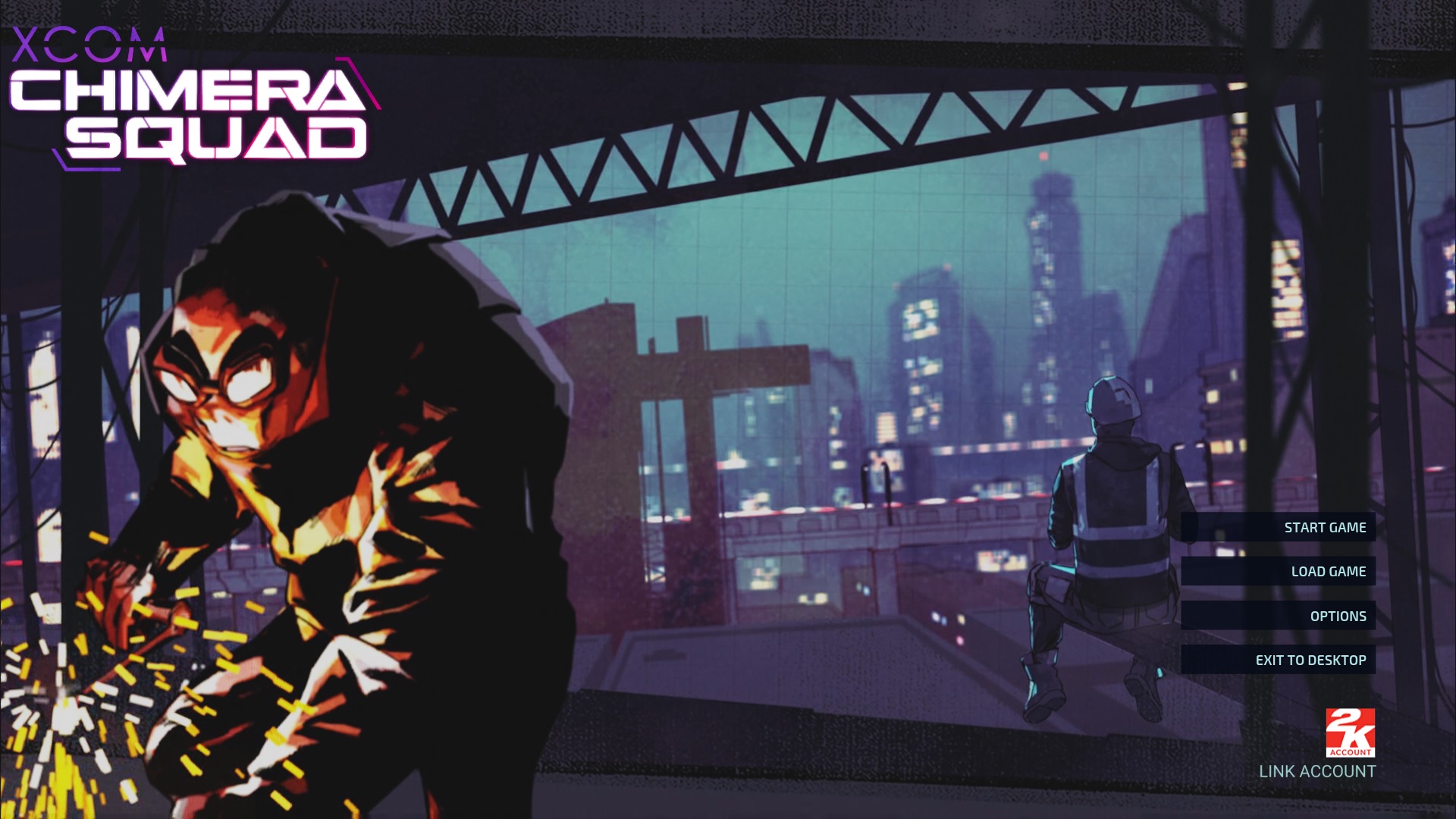
I've never gotten into XCOM. I've tried the first reboot game, XCOM: Enemy Unknown, but it's discouragingly difficult. It's very easy to lose key characters in your team very quickly. I've also tried Mario + Rabbids: Kingdom Battle, which is just XCOM but with a Mario coat of paint. It was more approachable, but also got very difficult very quickly.
But I found it! I found the XCOM game that makes me actually like XCOM. All they needed to do was put in a bunch of likeable alien characters, and turn down the difficulty. There, was that so hard?
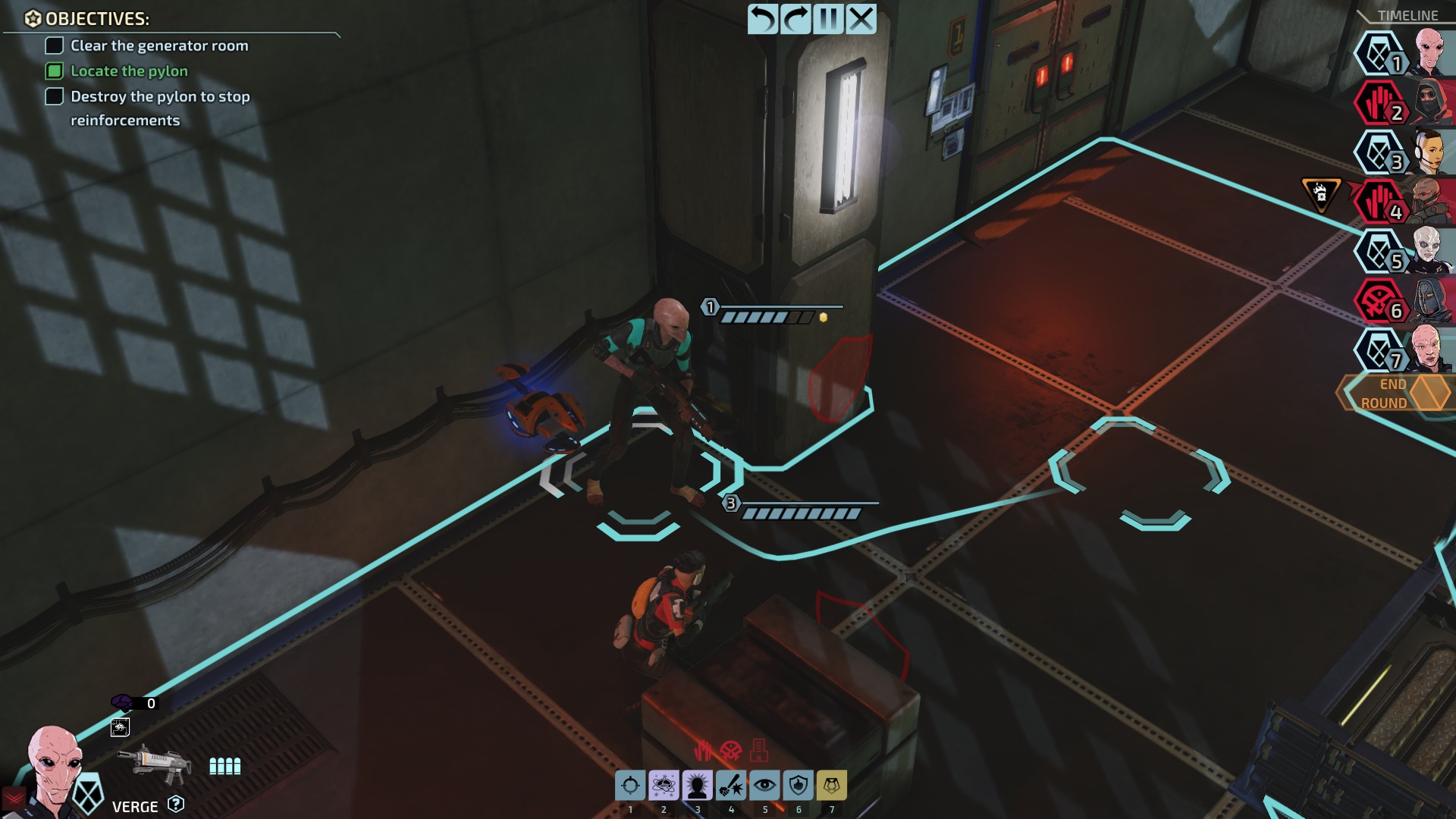
XCOM: Chimera Squad takes place long after the events of XCOM 1 and 2. The humans and aliens who previously fought each other are now living in harmony. You play as a squad of mixed species, investigating various forces of unrest in City 31. As is usual for XCOM, you go on various strike team missions in which you take down enemy combatants, and occasionally have other objectives like retrieving intel.
I've played a lot of video games (if this blog is any indication), but in a lot of ways I'm still pretty new to gaming, and I'll happily take an easy way into a popular genre. Chimera Squad is a great entry point. Your teammates can't die; they just fall unconscious, and can be revived back at base. This gives me the freedom to play around in both the combat sections and the base-building sections, without stressing too much about my entire team dying.
Plus, the peacebuilding aspect of Chimera Squad really really appeals to me. There's more work put into the story and characterization here than in any other XCOMs I've played. And most importantly, my XCOM team has a big buff alien girl who punches enemies in the face and who shrugs off wounds as "just another scar," and I'm pretty gay for her. Chimera Squad feels like it was made for me.
2) Control
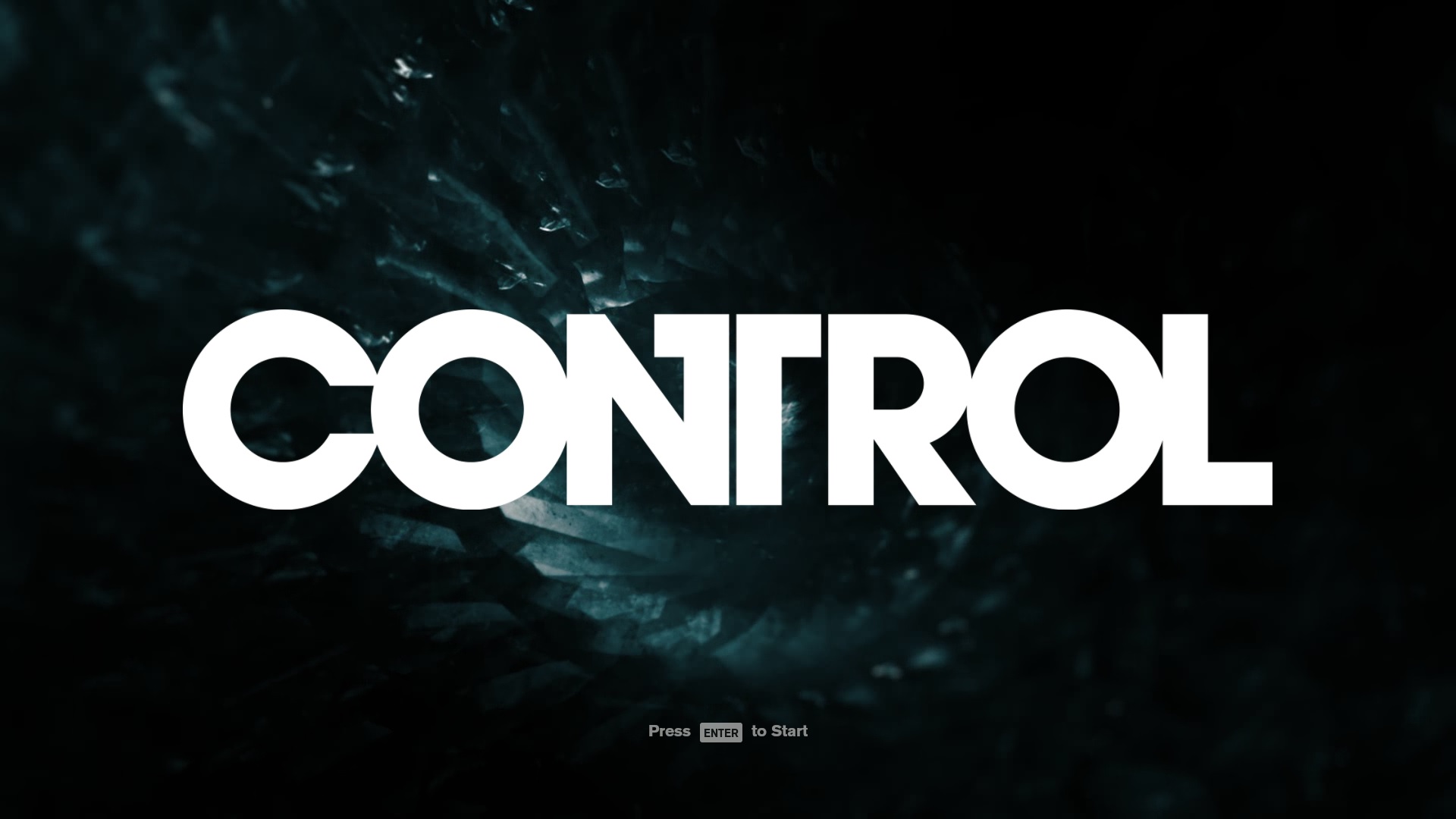
It's taken me a few tries to really get into Control. I originally bought this game last year, but it didn't click. I was sold on Control being really weird, like the game equivalent of "SCP Foundation," a blog about weird and fantastical artifacts. But Control isn't weird, not at first; it's a basic cover-based shooter that mostly takes place in office hallways, the most boring possible setting.
I'm glad that Humble gave me a second opportunity to try this out, because this time I actually got into it. It was a pretty close race between first and second place for the best game of the month, and the next few games after that were pretty close behind. March was an unusually good month for Humble.
Control is a game about Jesse, a woman who arrives at a Manhattan office building called the "Federal Bureau of Control" under mysterious circumstances. Almost immediately, she's been made the new Director of the Bureau, and it's up to her to eradicate a malicious force known as the Hiss from the building.
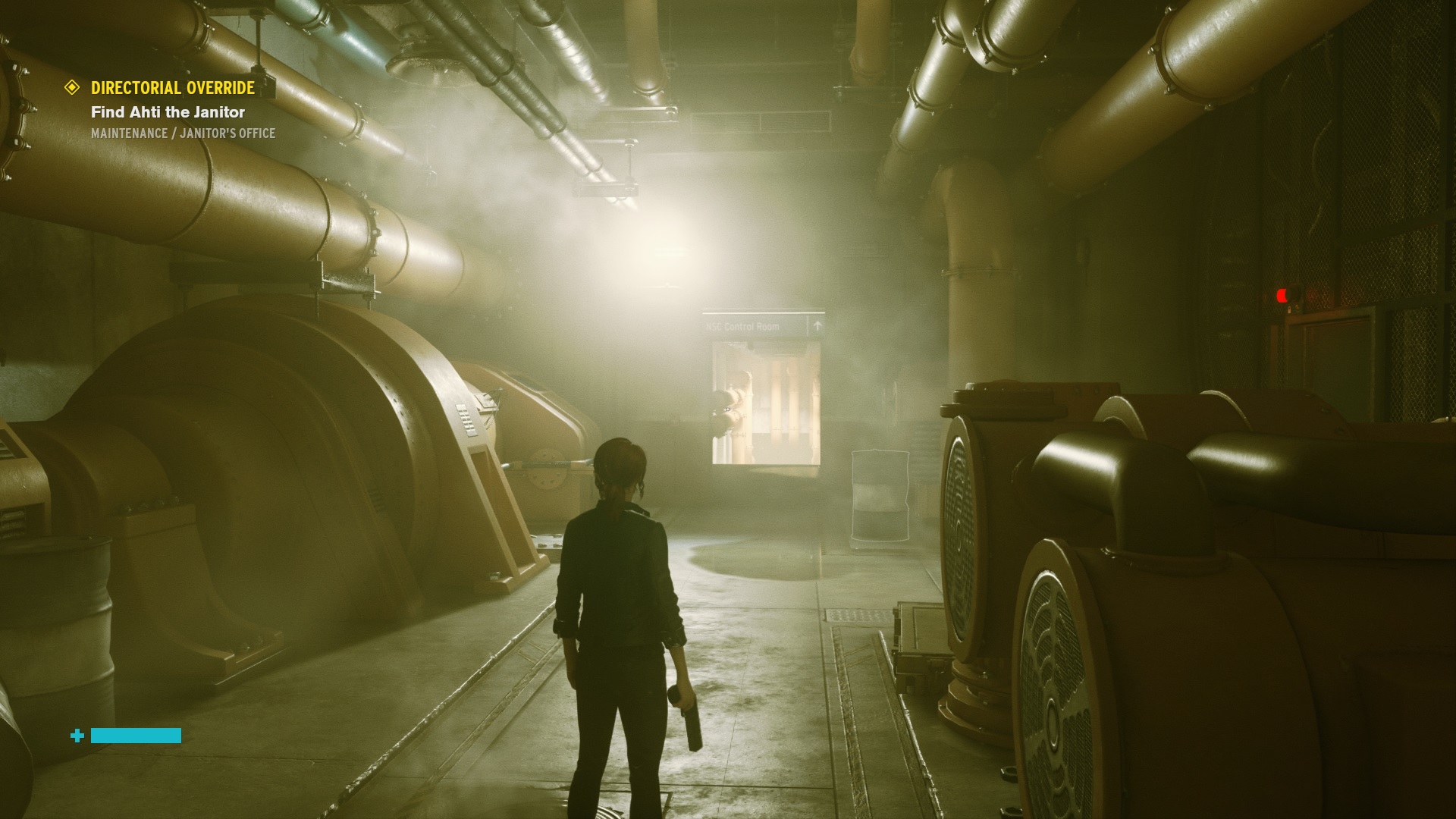
I've seen some pretty weird shit. Control is not that weird. It has weird circumstances, like how quickly Jesse is put in charge of the secret organization she just discovered the entrance to. It has weird little details; sometimes they're written into the assorted documents scattered around the building, or sometimes they're in the garbled voice messages Jesse discovers from dead people and otherworldly beings.
But the gameplay itself? Very standard. Oh, you get powers, but it's stuff like throwing around pieces of floor with your mind, or a speed dash, or different flavors of gun. When you defeat enemies and capture a control point, you flatten out a room's convulted nonsensical architecture into something more boring and office-y. True to its name, Control is about keeping some measure of control over the strangeness in your life.
But it's a fascinating little story, with intriguing characters. And it's gorgeously made. Whoever had to program all the little particle simulations for smashing anything into anything had their work cut out for them. Ultimately, the Metroidvania exploration nature of the gameplay makes this a game that I want to keep messing with, to see what else I'll find as I dig in. It's not an amazing game, but it's pretty neat.
3) Elex
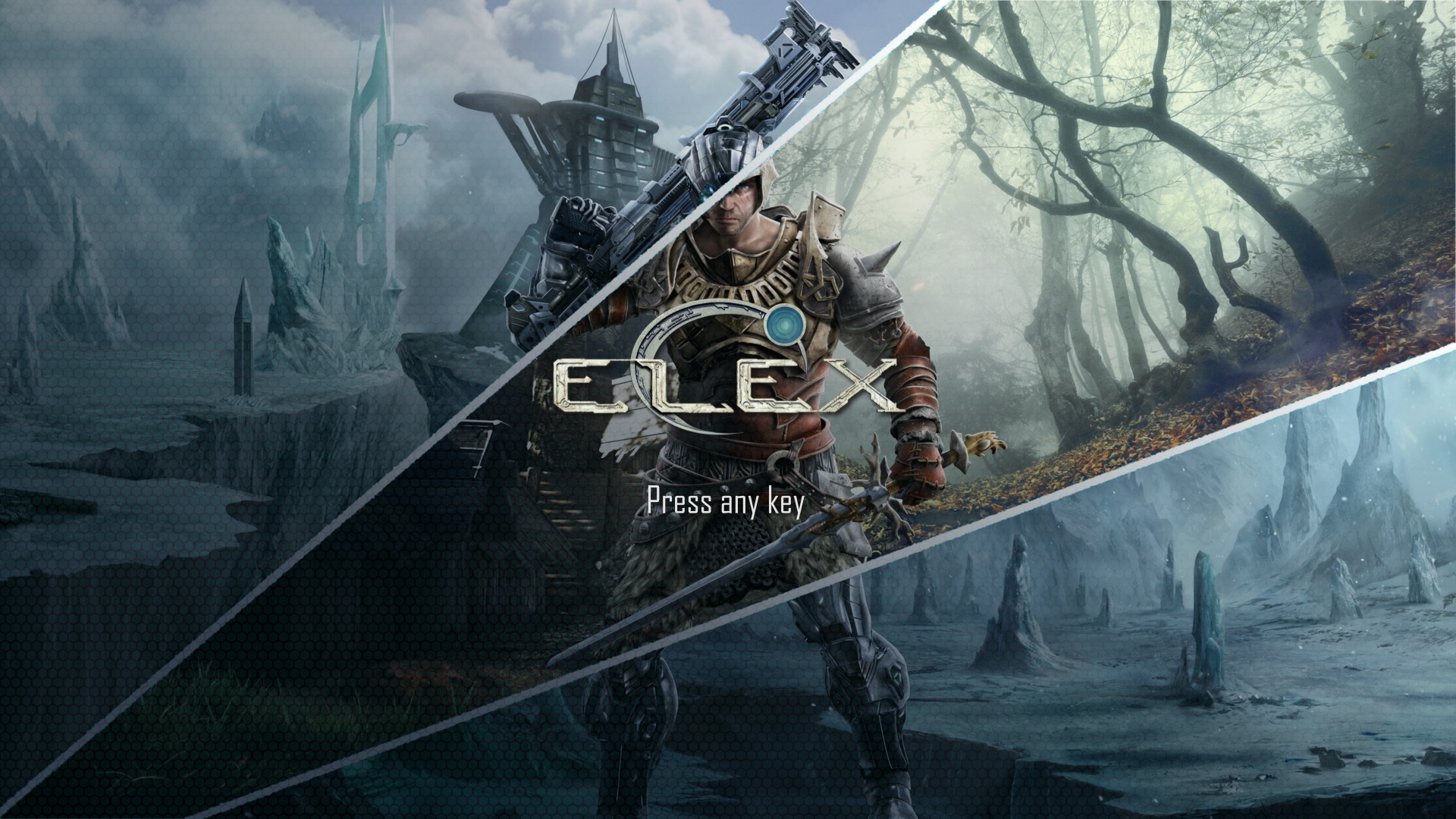
THQ Nordic is a very strange studio. They're known for indie games and for low-budget blockbuster games, like the Darksiders series and the Red Faction series. I never know quite what to expect when I start up one of their games.
Elex feels like it doesn't have quite enough money behind it to do what it was trying to achieve, and yet also way more than I expected. It takes place in post-apocalyptic North America... well, okay, actually the wikipedia page tells me it takes place on another planet, but it sure LOOKS a whole lot like post-apocalyptic North America. And it's very very pretty!! I haven't really seen a game capture the beauty of a quiet drizzle in a forest like this before.

You play as an amnesiac dude who wakes up and finds himself in the middle of a war between various factions for control of the world. You're given a sword at first, which makes the game feel like high-budget Elder Scrolls IV: Oblivion, or alternately low-budget Elder Scrolls V: Skyrim. That extends to the conversations you can have with NPCs, which are way way too long and which you can't skip. This game needed some serious editing.
I rank this game pretty highly because it's a genuinely pleasant game to wander around in. It feels like if Fallout stamped on the breaks and focused less on the combat and more on the pleasant quiet solitude of an empty landscape. I appreciate that more than I can say.
4) Pesterquest
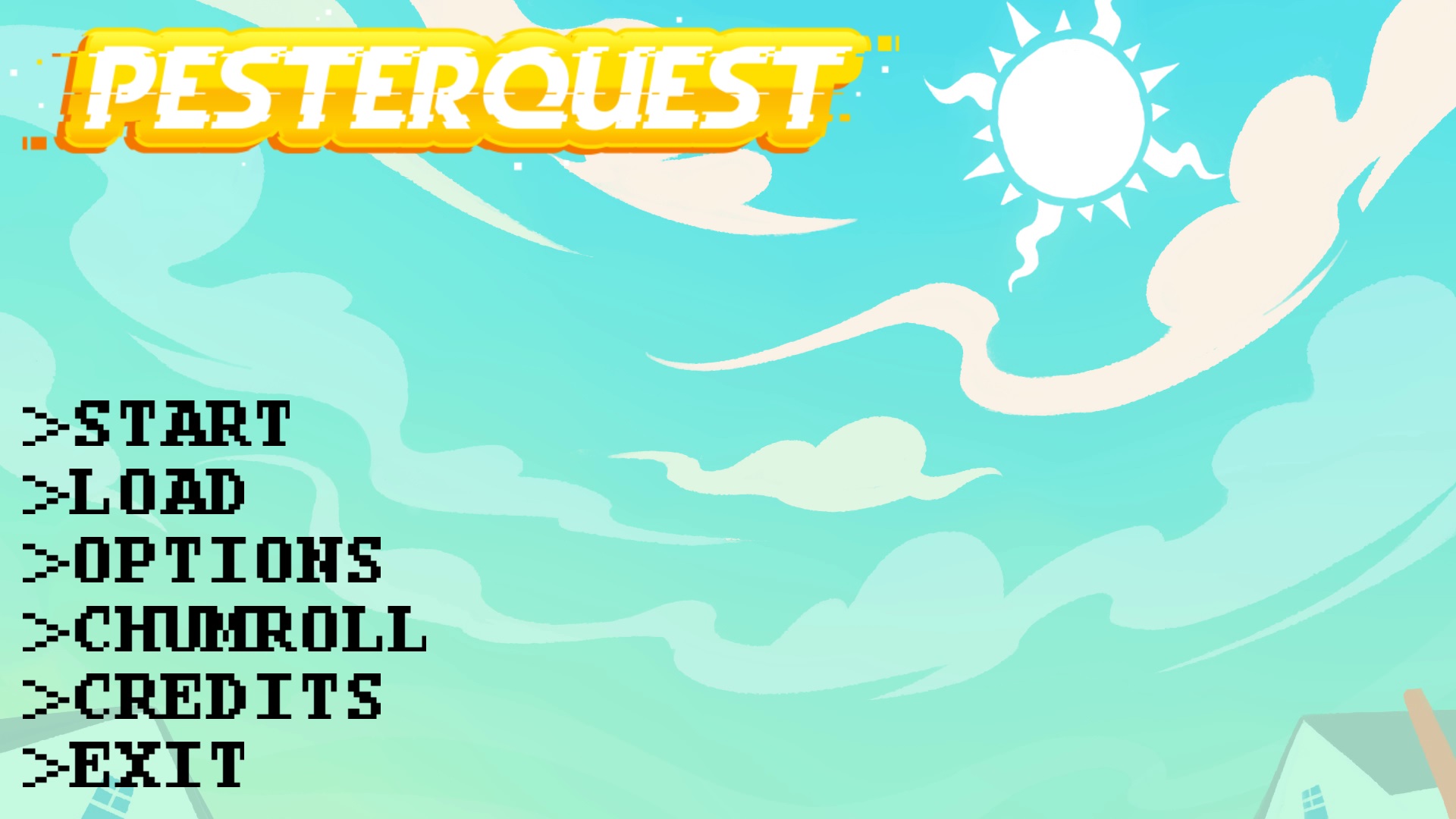
This is the part of the list where I have to emphasize that this list will betray my own biases pretty strongly. I'm a long-time Homestuck fan, which means a Homestuck video game is something that'll appeal to me more than it would to other people.
Pesterquest is a visual novel that takes place in the Homestuck universe. Supposedly it's a sequel to Friendsim, a previous game made by the same team, but I haven't gotten around to playing Friendsim. As it is, Pesterquest sees an unnamed player character falling into the Homestuck canon and experiencing non-canonical conversations with key Homestuck characters.
The obvious benefit to this arrangement is that it gives you more time to hang out with the characters of Homestuck, who were already very interesting and compelling, and who got comparatively less time for growth and development towards the end of the comic. It's cool to spend a little bit of time with favorite characters.
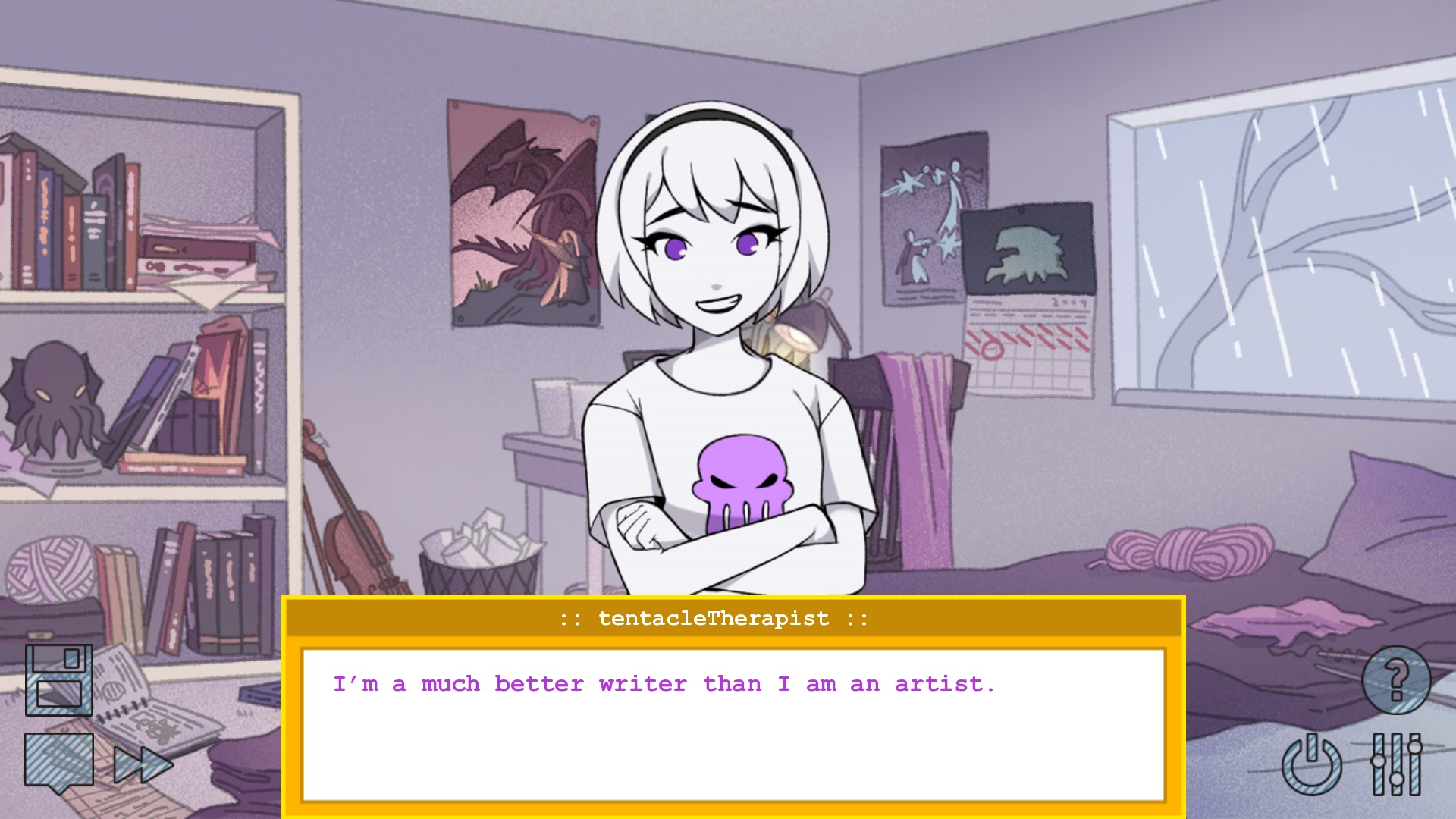
The less obvious benefit to this arrangement is getting to see Homestuck as written by writers that aren't Andrew Hussie, the main author of Homestuck. Over time, Homestuck has become improved by its fans and collaborators, and it's nice to see the more mundane aspects of their lives fleshed out by fans who have thought about this sort of thing, and who have probably seen themselves in these characters. Here we get to explore Rose's gay fanfic writing, and Vriska's excitement for roleplay.
There's not a lot to Pesterquest; each character's miniquest takes less than an hour to complete, and there's just a few of them. But these are characters that are worth returning to, and I'm hoping to finish the game in the future.
5) Wildfire
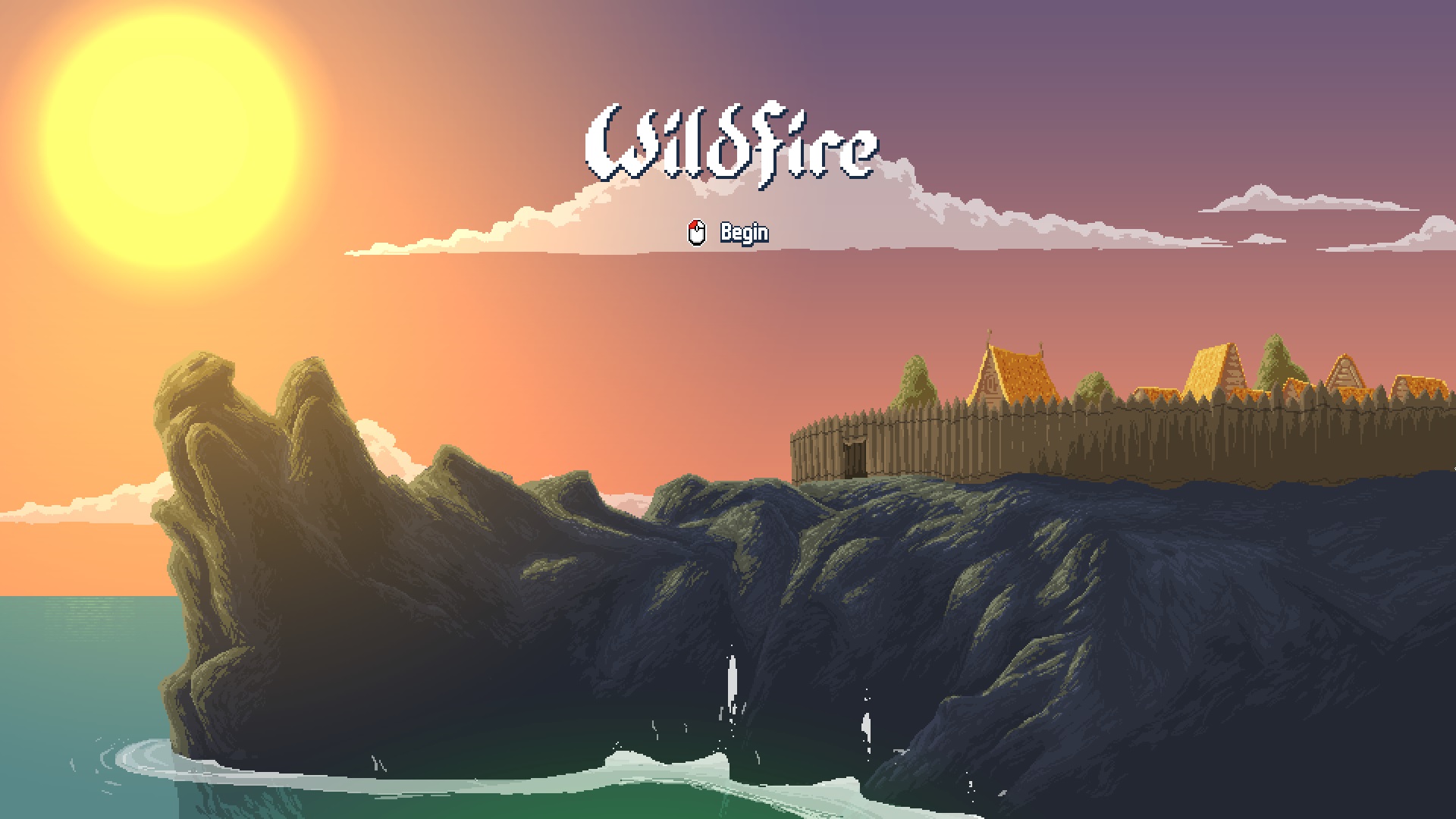
Now we get to the part of the list with all the games with beautiful pixel art. Like, impressively pretty.
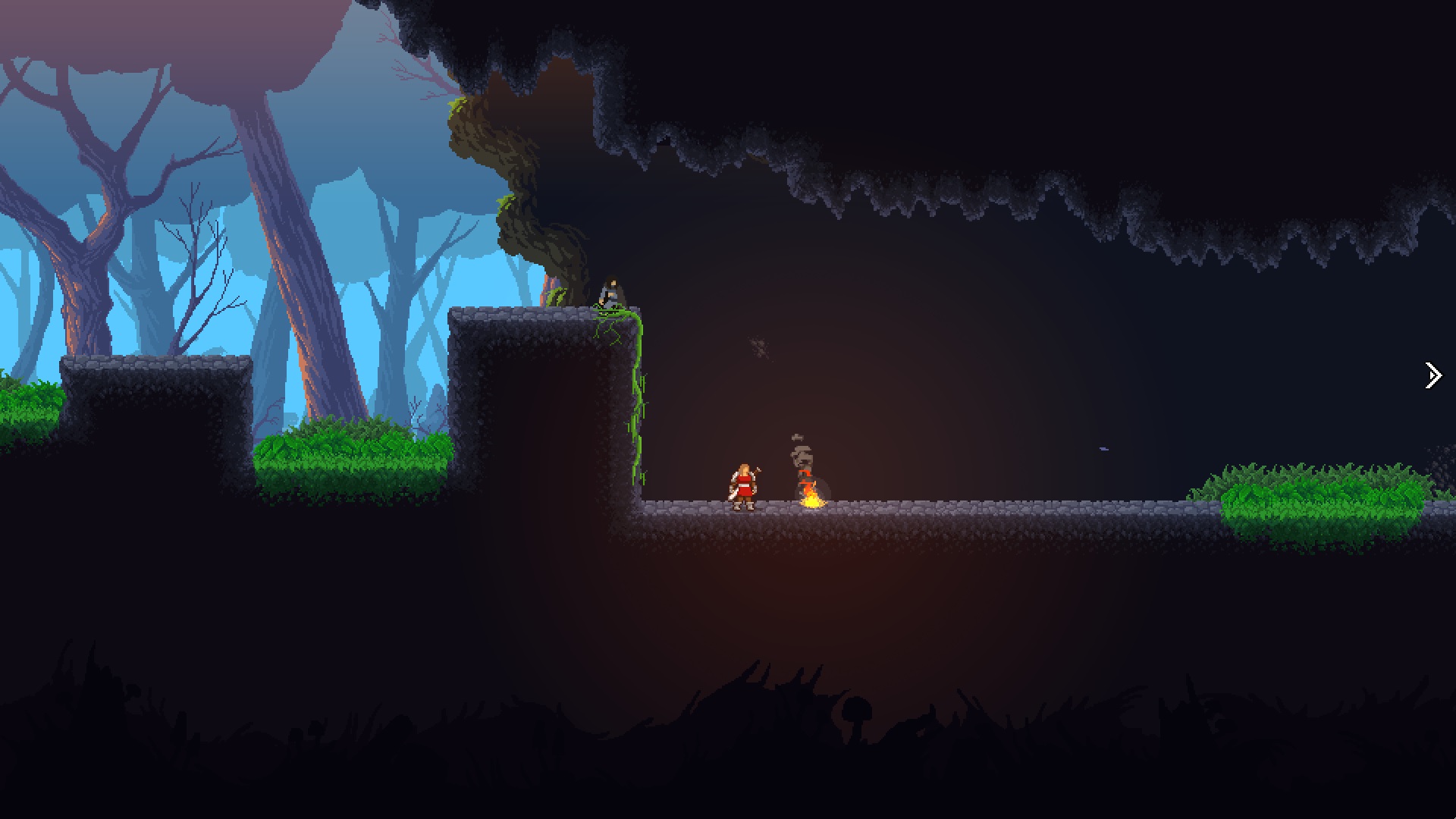
Wildfire is a game in which your village is destroyed and you're on a quest for revenge. After investigating a meteorite, you gain the ability to control the elements, starting with the power to control fire. But since the enemy warriors who destroyed your village have pointy swords and you do not, the game is mostly focused on stealth and puzzle solving.
The visual style of this game really strongly reminds me of a flash-based exploration game I played years ago called Knytt. It's basic, but carefully designed. And Wildfire is a lush mix of subtle pixel art and beautifully painted backgrounds. I'm super into it, and I enjoyed the level-based gameplay quite a lot.
6) Ageless

Ageless is a Celeste rip-off. But it's a pretty good Celeste rip-off!
As with Wildfire, you play as a young person who has just discovered superpowers that let you progress through level-based 2D pixelly landscapes. In this game, your power is to control the age of things around you. If you shoot an arrow at a plant or animal, you can either age it or de-age it, leading to various puzzles.

Here's where the game feels very Celeste-"inspired." First is the level proportions; something about this screen just feels very Celeste. Pull up some footage of Celeste and compare them side by side, it's very similar.
Second is the story. Ageless stars a woman protagonist with self-loathing issues; the narrative is doled out gradually as she meets various other characters, and some of the obstacles around her are meant to reflect her mental state. That entire sentence could also be used to describe Celeste.
There's nothing wrong with making a rip-off, and Ageless is genuinely entertaining. But Ageless misses a few things that Celeste has. There's a general lack of production polish that cheapens the experience a bit. Also, Celeste told a sweet and subtle story over a long period of time, but Ageless is pretty obvious about telegraphing its main arc pretty much immediately.
And most importantly, Ageless isn't that hard. Celeste was brutally difficult, and incorporated that (and its extensive accessibility features) into the story in interesting ways. Celeste was more than the sum of its parts because it all came together to create a unique experience, whereas Ageless doesn't have that degree of self-control. It's still pretty fun, but it's no Celeste.
7) Kingdom: Two Crowns
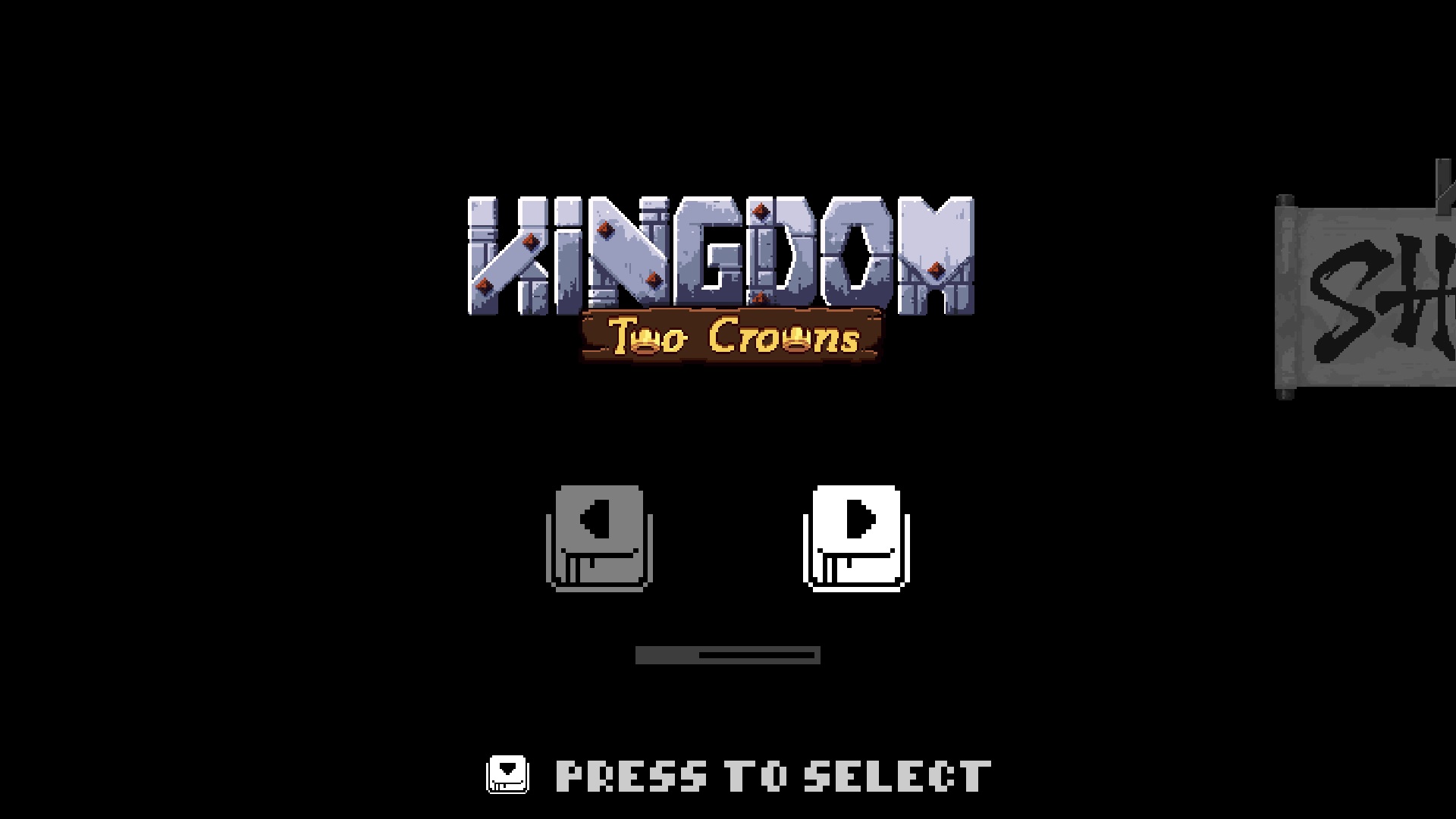
Holy crap this game is pretty. Goodness gracious oh my gosh.
I didn't know you could DO this sort of stuff with pixel art. Kingdom: Two Crowns prominently features a body of water in the foreground, which displays constantly shifting reflections of the screen's upper half IN PIXEL ART. It's a transcendentally beautifully-looking game, and I genuinely do not know if I've seen a game's pixel art that has topped it in terms of sheer craft.
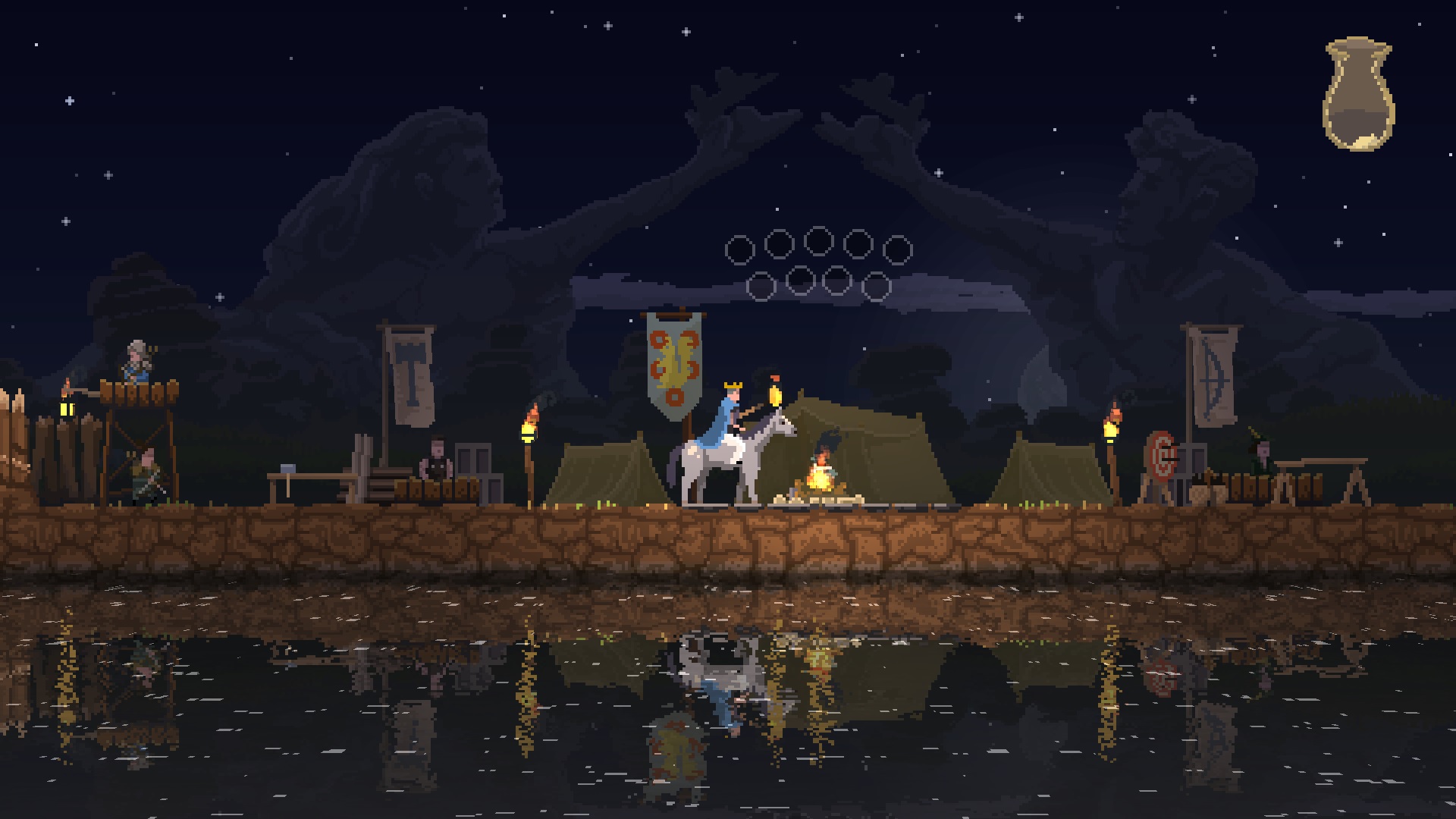
What, you wanted to know about the gameplay? It's okay.
Kingdom: Two Crowns is (despite the number in the title) the THIRD game in the Kingdom series. Two Crowns is a base management game in which you (the realm's king or queen) have a huge jar of coins, and you use it to fund the defense and slow expansion of your realm. Exploring and giving out coins are pretty much your only means of interacting with the world, so you're dependent on your kingdom to defend you. It's a pretty neat idea for a game, and a good method of interaction with a pixel-based world.
Maybe I'm just impatient, but I ran out of coins fast, and then I had not a lot to do. At that point, you mostly have to sit around waiting for more coins before you can do anything, and it's luck of the draw whether you'll get your crown sliced off your head by attackers in the meantime. If I had the patience, I might be able to get really into this game. But I don't.
8) Peaky Blinders: Mastermind
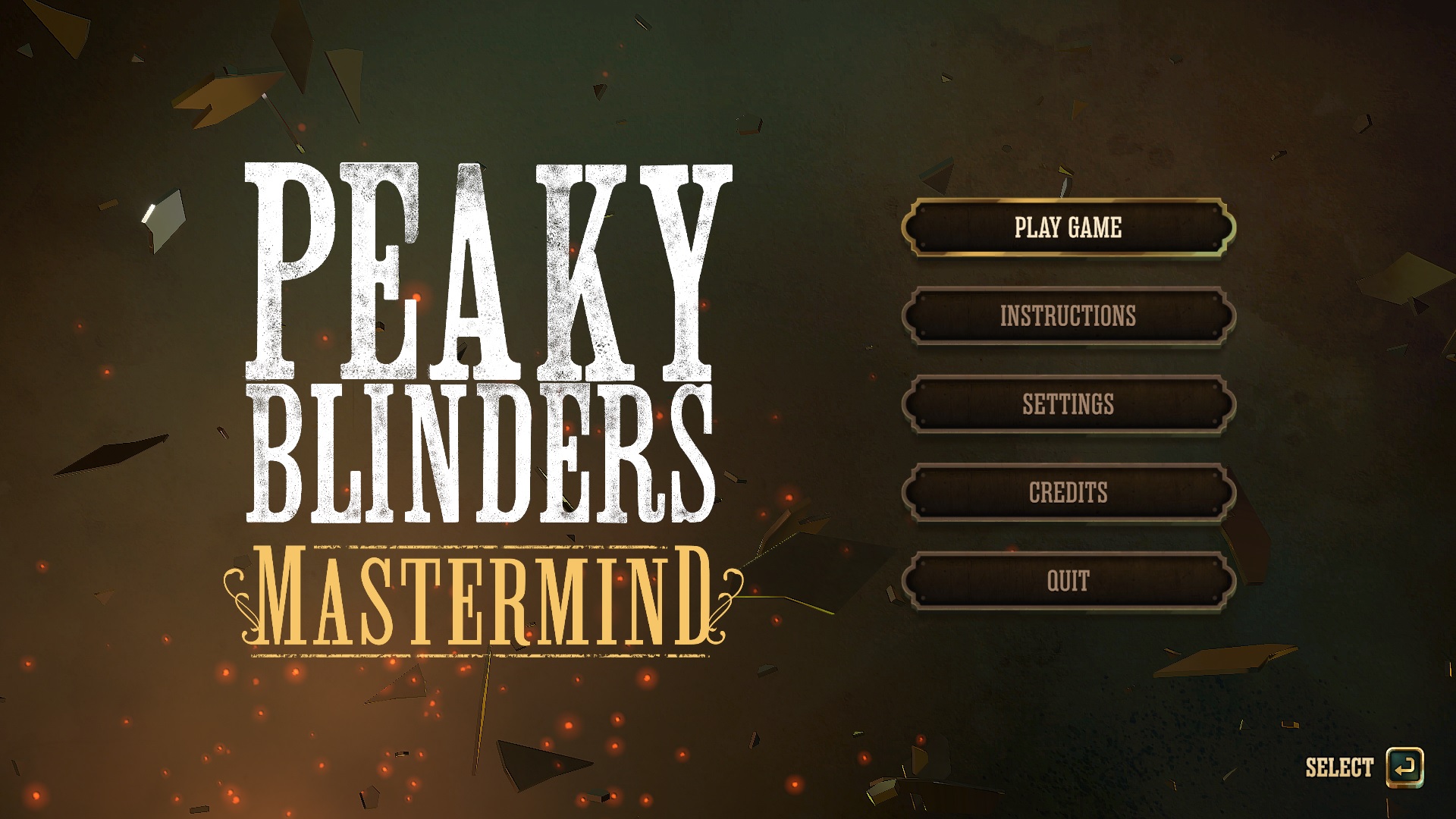
I'm impressed that a game that's a blatant advertisement for a television series made it this high on the list. Well done, Peaky Blinders.
Peaky Blinders is a very British crime drama that takes place in the early 1900s. It's an ensemble piece, but it's also a star vehicle for Cillian Murphy, the guy who played Scarecrow in Nolan's Batman movies. It's about to get its final season on Netflix later in 2021, and I can only fathom that this game was created as an advertisement for the show's Netflix finale.
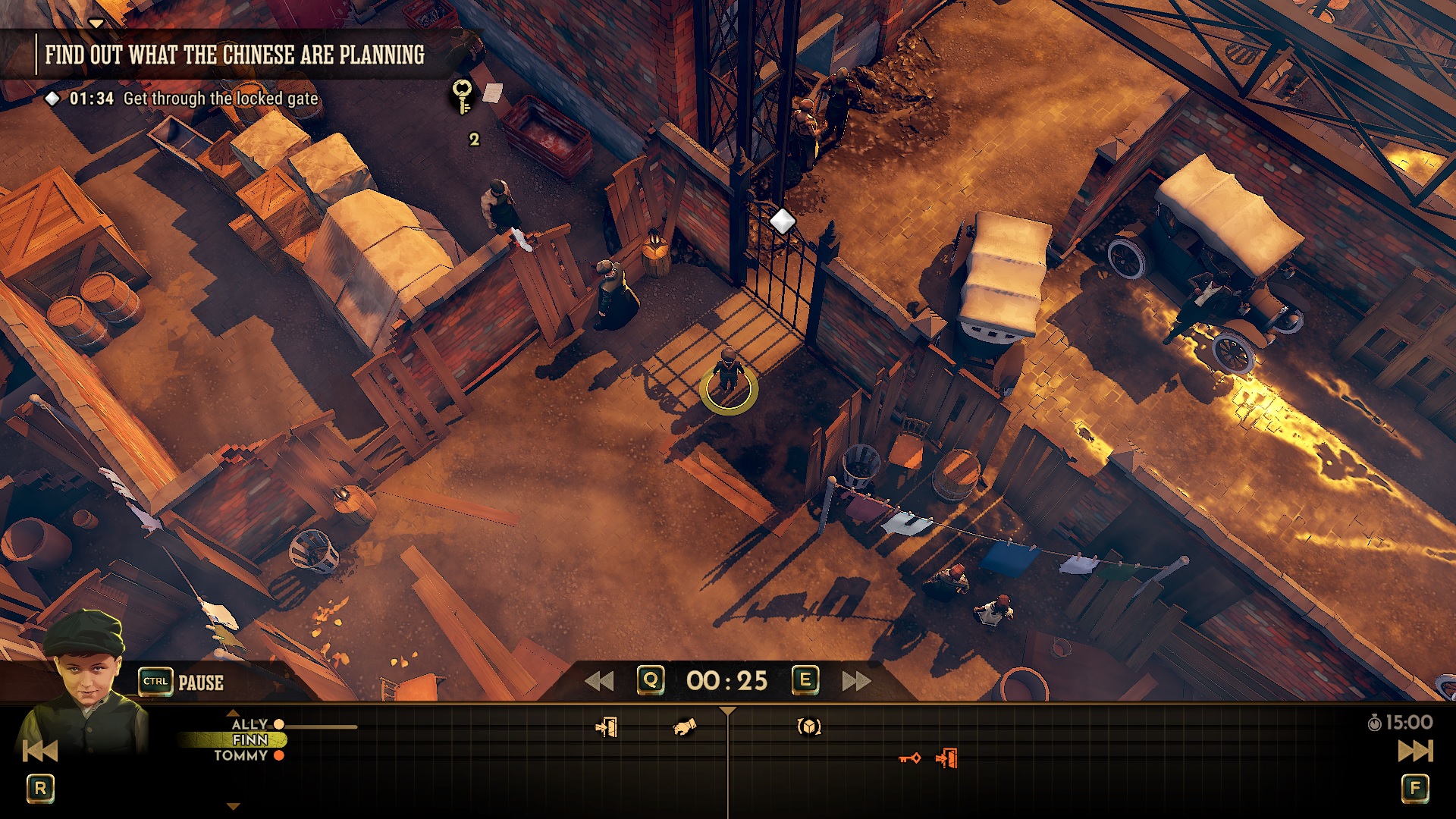
Mastermind is not a very long game; there are only ten levels. It's sort of an adventure/puzzle game; you wander around small environments as various characters from the show, sneak around buildings, and solve puzzles. But there is a gameplay twist that makes this more than just a rote offering: you have the ability to move around on the timeline and control different people at each point, so it's kind of like playing a multiplayer game with other versions of yourself. I've seen versions of this mechanic in other puzzle games, but since different characters have different abilities here, you do have to strategize who you send to do what jobs, so you can get to the end.
There's time limits for bronze, silver, and gold medals, and the game isn't very long, so it feels pretty manageable. I'd be interested in trying to finish this one, and maybe even play around some more to improve my times.
9) Hotshot Racing

Sumo Digital has been decently prolific in the videogame indutry for nearly two decades now, and they got their start in classically styled racing games like the OutRun series. I first ran into the studio with Sonic & All-Stars Racing Transformed, a SEGA-themed kart racing game that I first played on PC. Hotshot Racing combines those two approaches: a clean and fresh modern approach to a very classic arcade-style racing game.
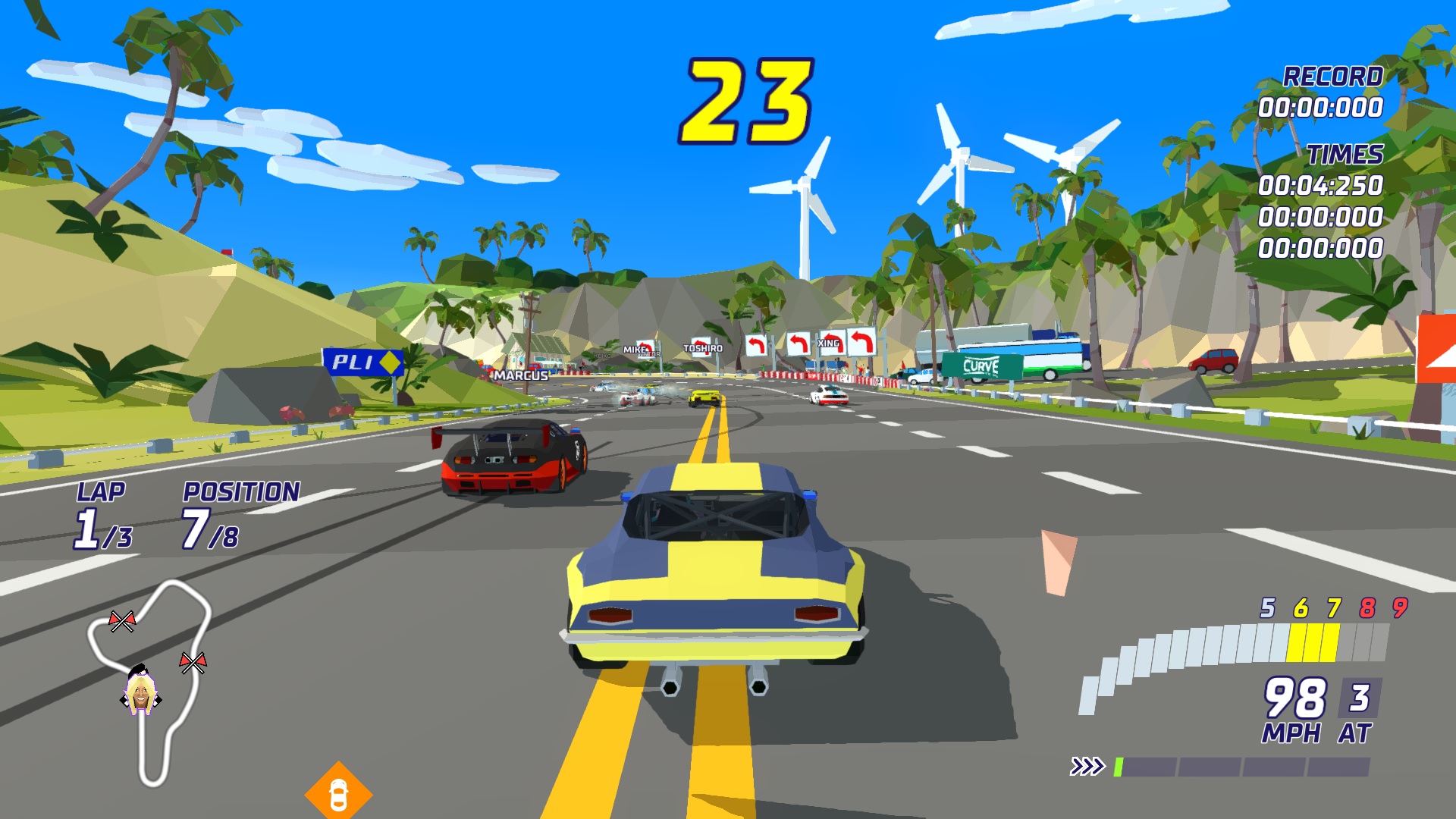
Hotshot Racing doesn't have a lot of vehicle or driver choices to offer; just around half a dozen of each. But it's very clean. The art style is polished and beautiful. There's usually something interesting to look at in the background; you race through ancient temples, amusement parks, and more.
My roommate's a huge racing game fan, and she loved the game. I had more mixed reactions to the actual gameplay. I'm used to drifting being pretty intuitive in kart racers like Mario Kart, but it's easy to spin out with this game's drift button. Also, other racers feel really mean; they deliberately crash into you, and doing so can also make you spin out. I found it hard to finish a game, with how easy it was to spin out and lose all your progress. I appreciate the craft on display here, and I can clearly see that it was made with a lot of love. My roommate dug the hell out of it, but it wasn't really for me.
10) WWE 2K Battlegrounds

After the fiasco that was WWE 2K20 in Autumn 2019, it was absolutely a good idea for 2K Games to take a year off from the franchise in 2020. But I don't think anybody expected their next game to be a WWE-styled follow-up to the arcade-style franchise NBA Playgrounds, which they recently acquired the rights to.
It KIND OF works. As somebody who isn't a huge fan of wrestling, WWE 2K Battlegrounds feels like a really really basic fighting game. There's a story campaign which introduces you to characters and fighting moves and game types, or you can go right into the tournament mode and play with whichever characters you like.
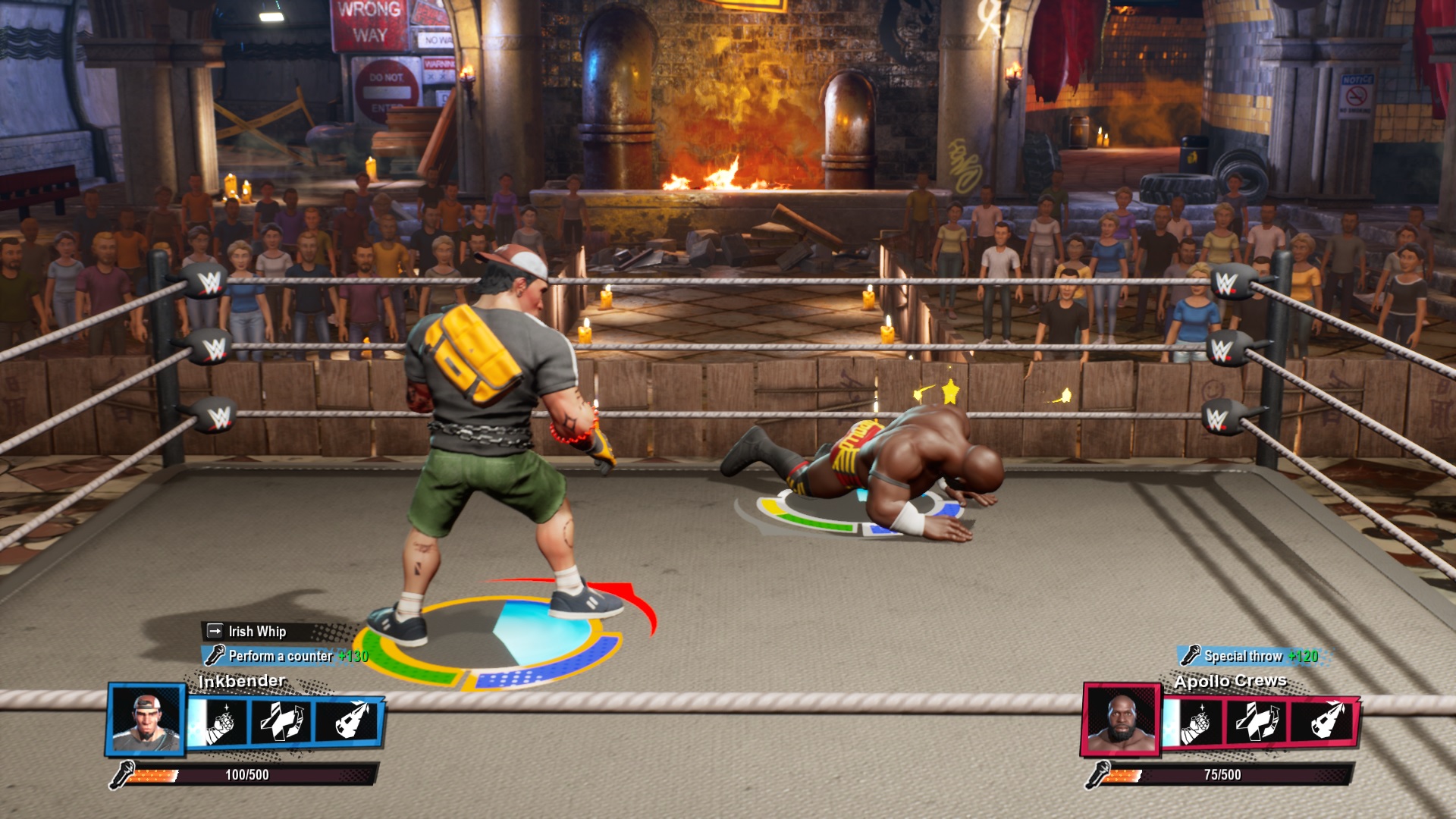
What I've gathered about wrestling is that it's ALL ABOUT the drama and the flavor. 2K Battlegrounds does not really deliver on that front. At least early on, every wrestler has the exact same introduction. There's not a lot of variety to the attack options within the wrestling ring. That does help to make the game more accessible, but it's not a very interesting experience. The game is basically functional, but basic isn't really what wrestling excels at.
11) Cyber Hook
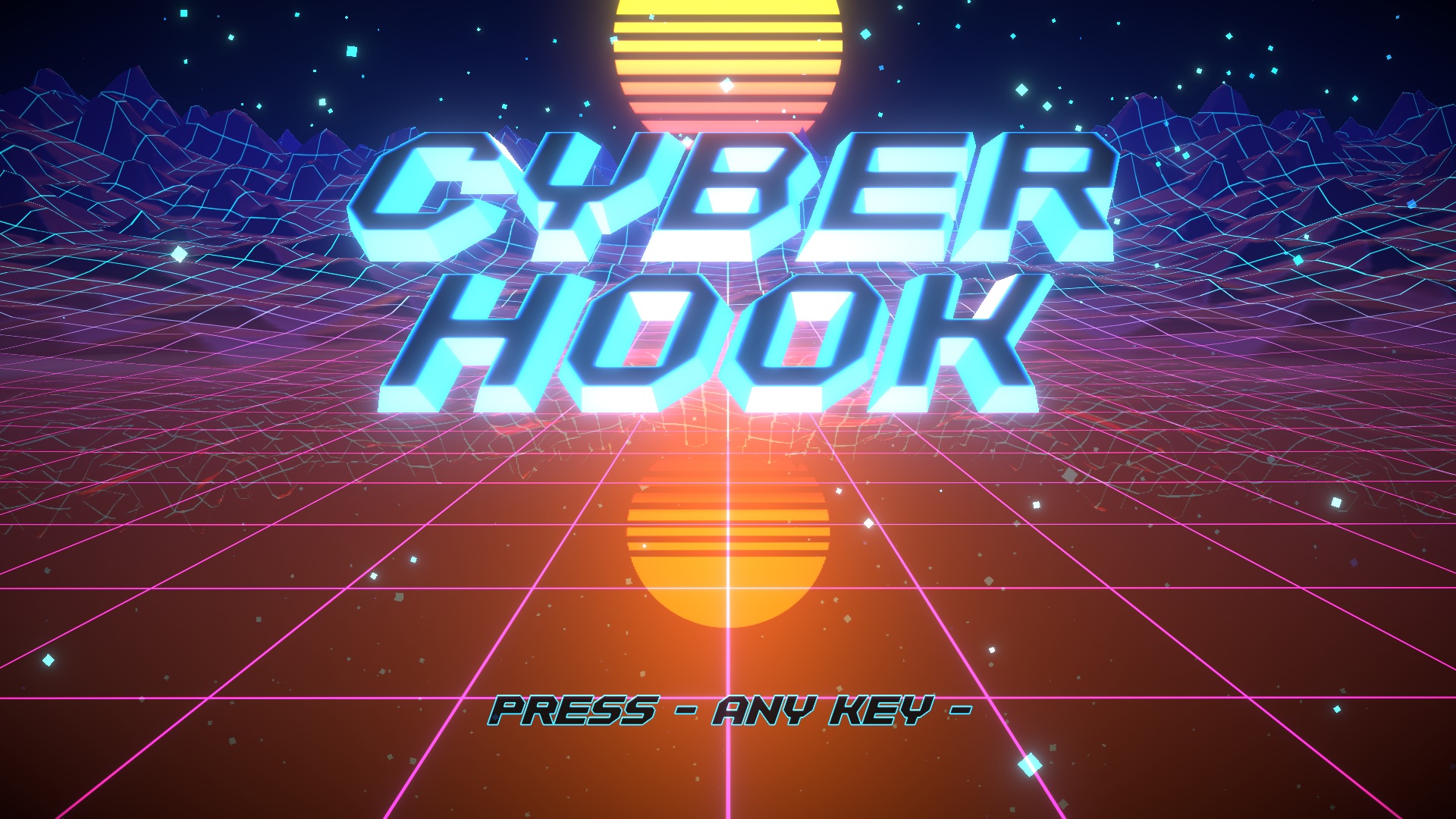
Here's a tip: please don't design your game with "speedrun goals" built into the game. A speedrunner is never going to battle against the game's idea of how fast they might play the game. A speedrunner's goal is always going to be whoever was previously fastest at the game. And even then, first you have to develop a game that's good and fun and has a fanbase, before you even think about speedrunners. If the idea of this design was to push the player to play this game faster, there's other language they could have used.
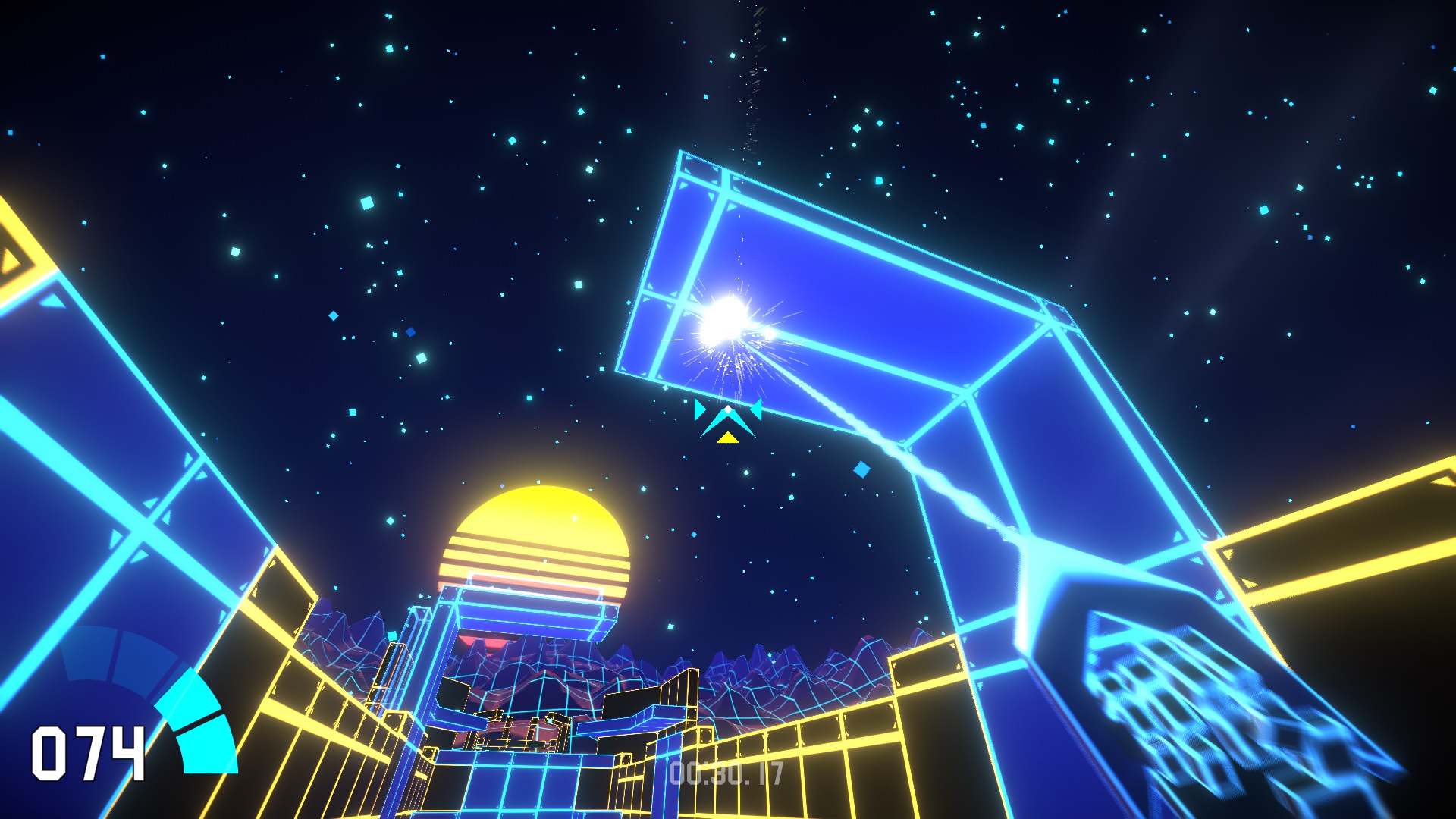
Cyber Hook is a grappling hook level-based game that takes place in a world with basic graphics that looks very much like Tron, or more accurately like that 80s neon meme that goes around every so often. Your goal in each level is to get to the end as fast as possible, using your grappling hook.
Pretty basic idea that could have been a decently entertaining little game. But it really really doesn't work for me. Controlling the grappling hook is complicated and difficult. The level design encourages you to play as fast as possible, which makes it easier to make mistakes. Maybe this style of gameplay will actually really work for speedrunners, but I didn't find it much fun to play.
12) Ruin Raiders: Unknown Menace
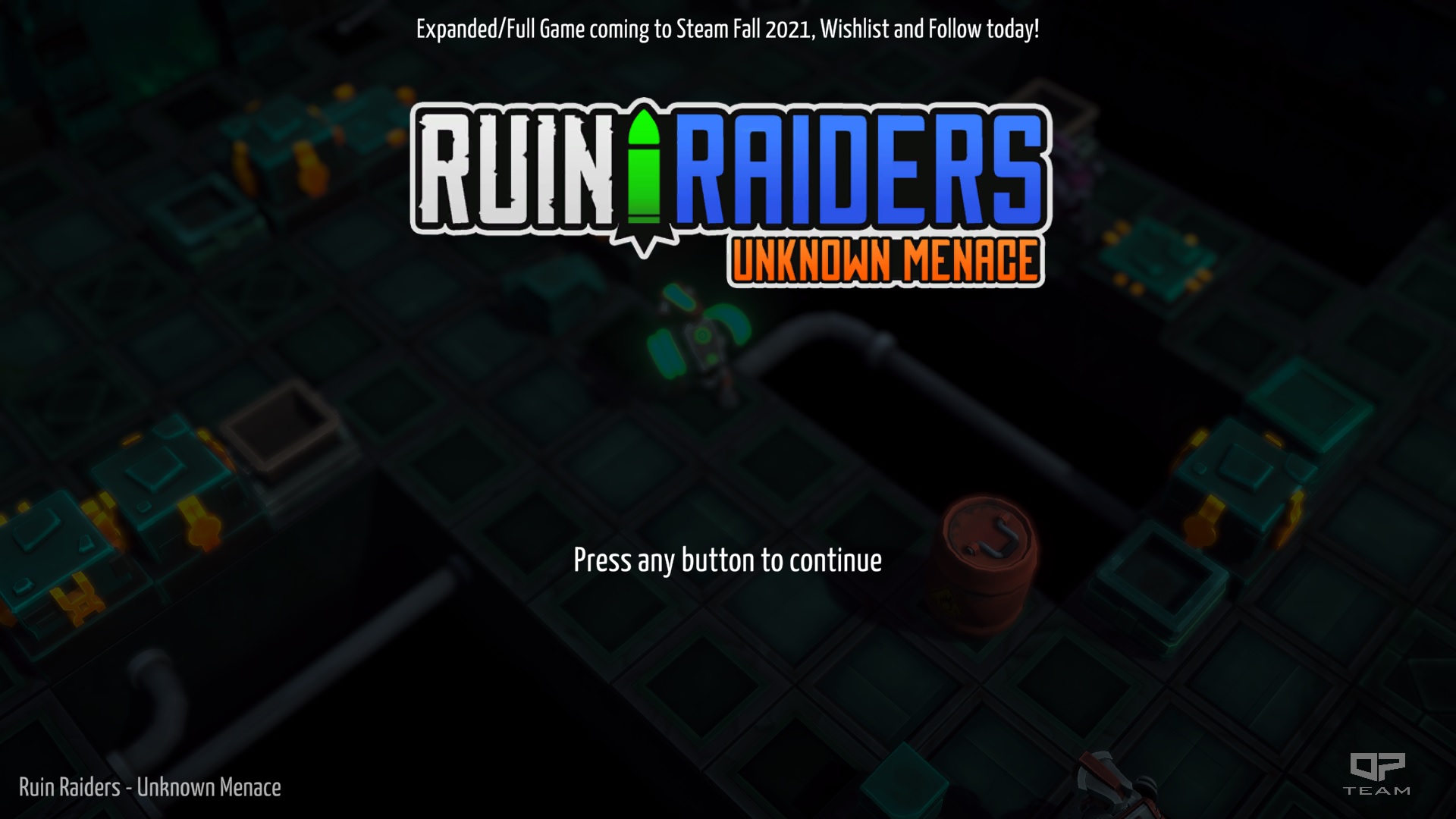
Word of advice: if you're going to debut a new game that blatantly copies elements from a popular game series, MAYBE don't debut your game within a bundle that also includes an entry of that game series.
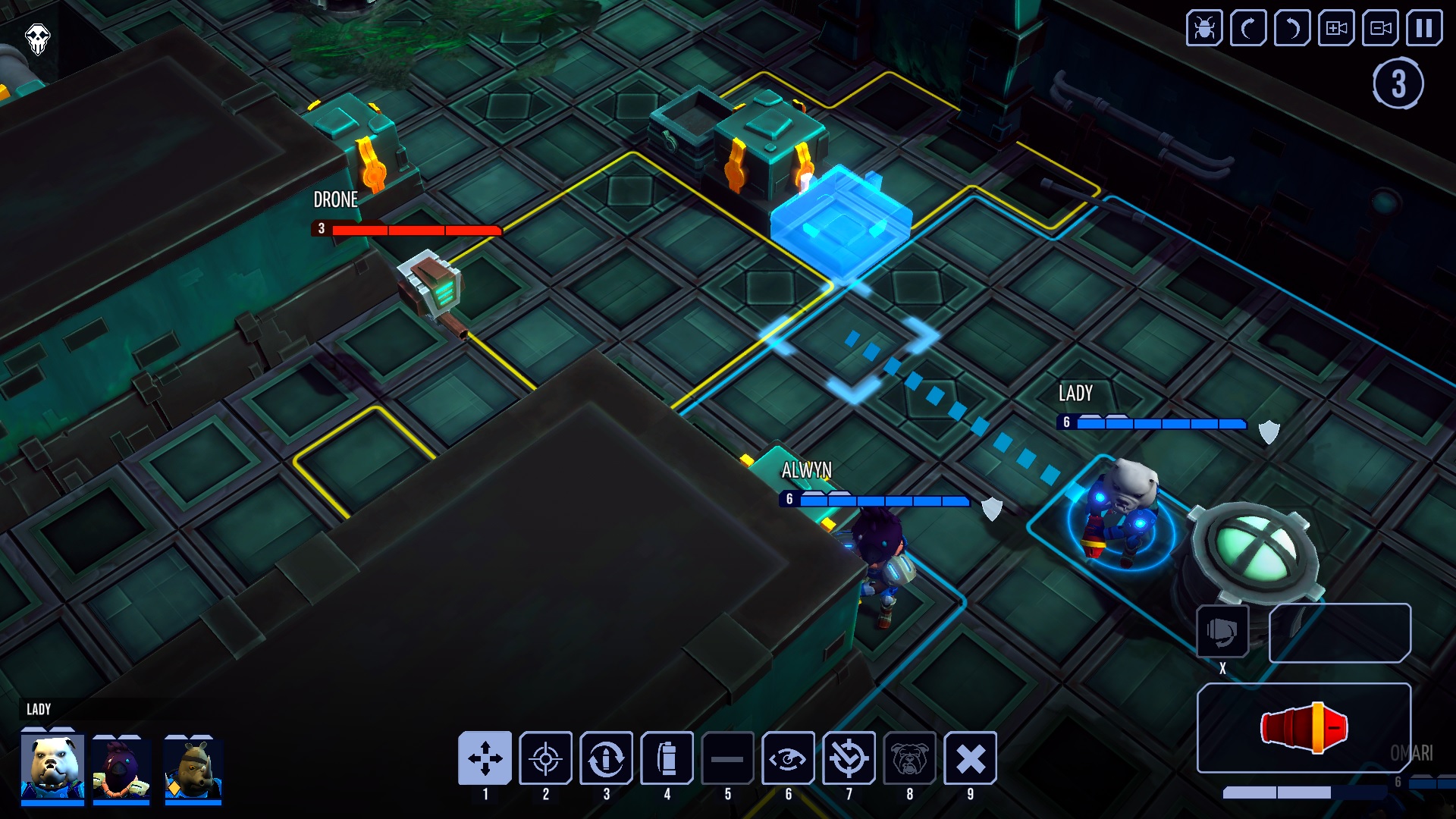
Ruin Raiders: Unknown Menace is this month's Humble Original. It borrows heavily from XCOM - and there's already an XCOM game in this bundle. In fact, Chimera Squad is a really really good game, and it's the most I've enjoyed any XCOM-style game. Ruin Raiders was already up against tough competition.
Ruin Raiders stars furry characters, like anthropomorphic dogs and bunnies, so that's pretty cute. The other new element Ruin Raiders brings is a dungeon crawling environment, which randomizes every time you play in a roguelike game structure. That's just... a lot of elements all smushed together.
And none of them are executed particularly well. The animation is meh, the dungeon design is boring, the combat is copied wholesale from XCOM, and there's no story or flavor to the game that makes any of it pull together into a cohesive whole. It's a bunch of game elements thrown into a blender. It does basically work - but why would you play this, when there are so many better games?
13) Boreal Blade
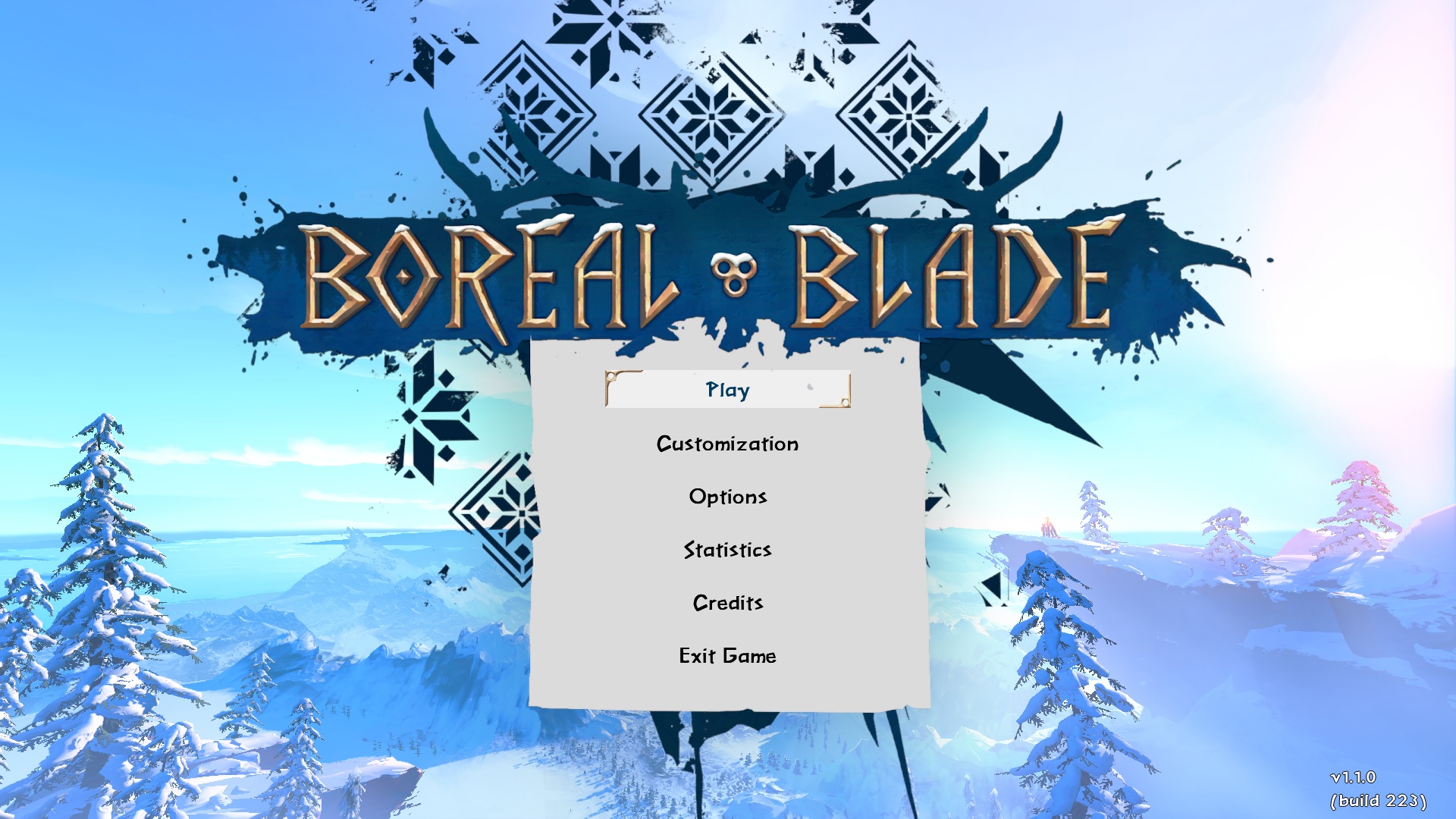
I'm so disappointed in Boreal Blade. It's a gorgeous swordfighting game that takes place in a Norse-inspired winter wilderness. In the tutorial, you follow your friend through the woods until you finally catch up with him and strike him down in a practice arena. Playing with the sword is a bit slow, but in a way that's super compelling for a fighting game style, like the swordfighting game For Honor.
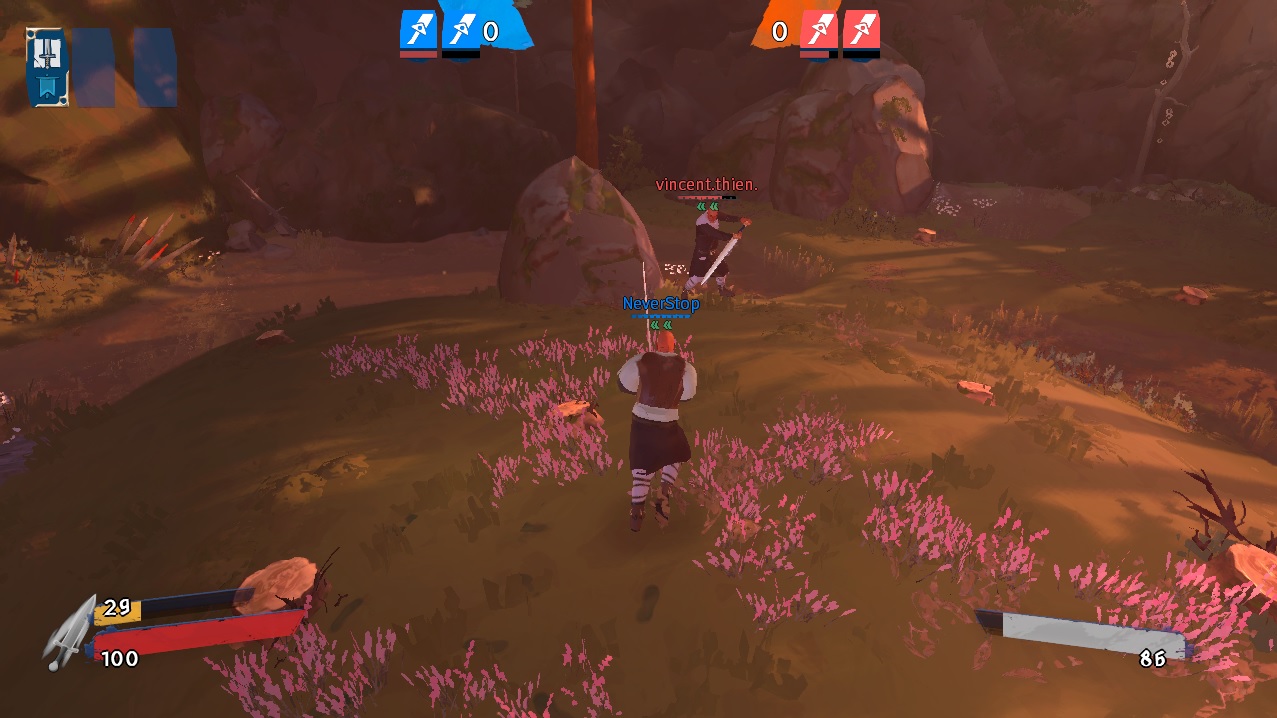
Shame they didn't decide to design much of a game outside that tutorial level! The rest of the game is all multiplayer deathmatches. There's no single-player content. That's not *inherently* a bad idea - Team Fortress 2 and Overwatch are decent games.
But listen, a multiplayer-only game is going to have a short shelf life, and that's ESPECIALLY true if you're designing an indie game. Boreal Blade got a Humble release this month. That's pretty high profile for an indie game. But I couldn't get into a single match. I sat around watching four people having fun, and when the next game began, the same four people were still playing, and I wasn't allowed in.
So I gave up. Other than that five minute tutorial, I wasn't able to play Boreal Blade. I sure would have liked to. Maybe they'll design something I can play in the future.
HUMBLE MARCH 2016 BUNDLE
1) Wasteland 2

I find the original Fallout games to be pretty intimidating. They're top-down isometric RPGs with a heavy emphasis on tabletop-style character building, with stats and inventories that I can never quite get the hang of. I'm more used to the modern first-person open world installments produced by Bethesda, along the lines of Skyrim set in post-apocalyptic Boston.
So it's no small feat that Wasteland 2, a love letter to the old Fallout games, enthralled me so much that it was nearly an hour of gameplay before I looked up and realized I hadn't taken a single screenshot for the blog.

Wasteland 2 is a Kickstarted sequel to Wasteland 1, but you'd be forgiven for never having played the first game, because Wasteland originally released for the Apple II. It's very primitive. By contrast, the craft behind Wasteland 2 is deeply excellent.
Here's the thing: if I'm not very familiar with a videogame genre, I prefer the game to bring me up to speed gently. And Wasteland 2 is fantastic at that. There's still systems that I don't understand, and the menus are confusing. But it doesn't matter, because you're immediately given a plot hook (there's been a murder), a destination (he got killed over there by the radio antenna), and a group of people to explore with. Right away, I'm invested.
It helps that the writing is really good, sharp but also full of depth. And the voice acting is good enough that I want to listen to all of it, rather than skipping over it like I usually do in text-heavy games. It all comes together into an experience that drew me in a lot quicker than I expected it to.
2) Shantae & the Pirate's Curse
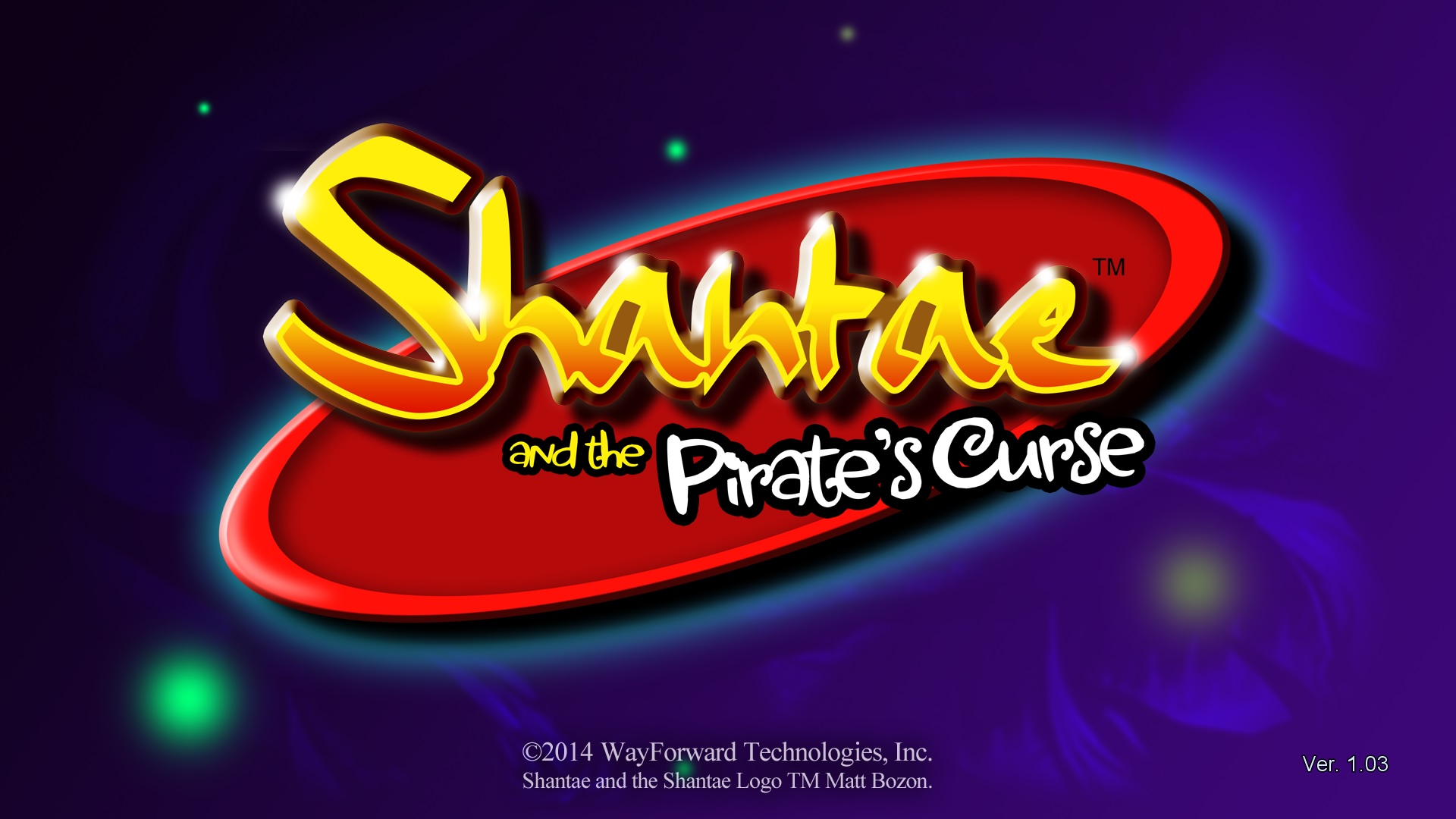
It's a bit odd playing a game on PC that was clearly intended for consoles. I don't mind so much when big budget console games like the Batman Arkham series get brought over to PC, because they do seem to fit the PC's general aesthetic.
But Shantae & the Pirate's Curse was originally designed for 3DS and Wii U, and it shows. It's a platforming game with simple controls and colorful graphics that are rendered for smaller screens. I went and looked at gameplay footage of the game on 3DS, and it fits the smaller screen much better.

Never mind, because regardless, Shantae is a gorgeous game. Both the full-size sprites for dialogue sections and the smaller ones in the gameplay are expressive and well-designed. It's also really fun. Once I got the hang of my key gameplay functions being mapped to the Z, X, and C keys, I got really into the combat and exploration.
Shantae presents you with a world that slowly opens up as you play. The game points you in one direction, but slyly teases you with other places that you could go to find more goodies. I do miss the transformations present in its sequel, Half-Genie Hero, which I played on Switch. But what's here is very fun.
3) Sentinels of the Multiverse

Sentinels of the Multiverse is a card game that's been out for about a decade now, and here's the videogame adaptation! This was apparently first released for mobile devices and then ported to the PC, and it shows because the controls are exceedingly simple and could work easily in a touchscreen interface.
Basically, this game takes superhero vs supervillain battles that you might see in a comic book, and adapts them to a card game format. You have a group of heroes who go up against a villain, and both you and them play cards at each other until somebody wins and somebody loses. There's cards for weapons, healing items, utility belts, superpowers, and just plain old punching the other guy in the face.
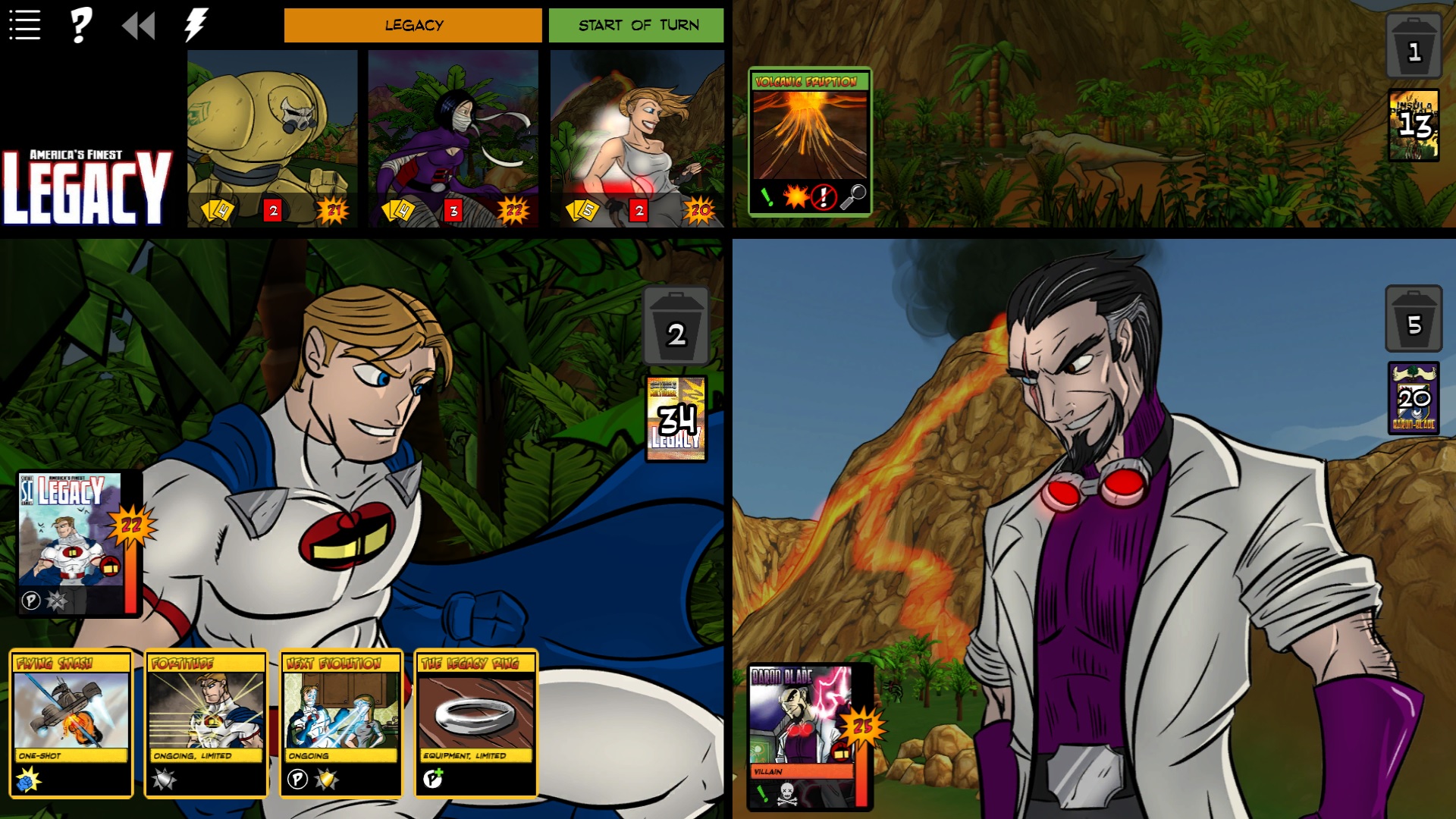
As a card game, I had a decent amount of fun with this. There's a lot of elements that add variety and interest: two-stage villains, environmental hazards, and so on. I'm generally a huge sucker for superhero media, and on a pretty basic level this worked for me.
Biggest downside that I could find is the game's flavor. The heroes and villains are extremely boringly designed. Characters like Bunker (a big robot guy), Legacy (a Captain America-esque dude), Wraith (stealth ninja), and Tachyon (speedy girl) are pretty forgettable; I had to look all of those names up.
Moreover, this game needs some serious polish. If you attack the villain with a long-range weapon, you get the same gunshot effect, regardless of whether you're attacking with a pistol, a shotgun, or even a non-gun weapon like a shuriken. The game's core is decent, and I liked playing with it, but it would need some work for me to consider it good.
4) Switchcars
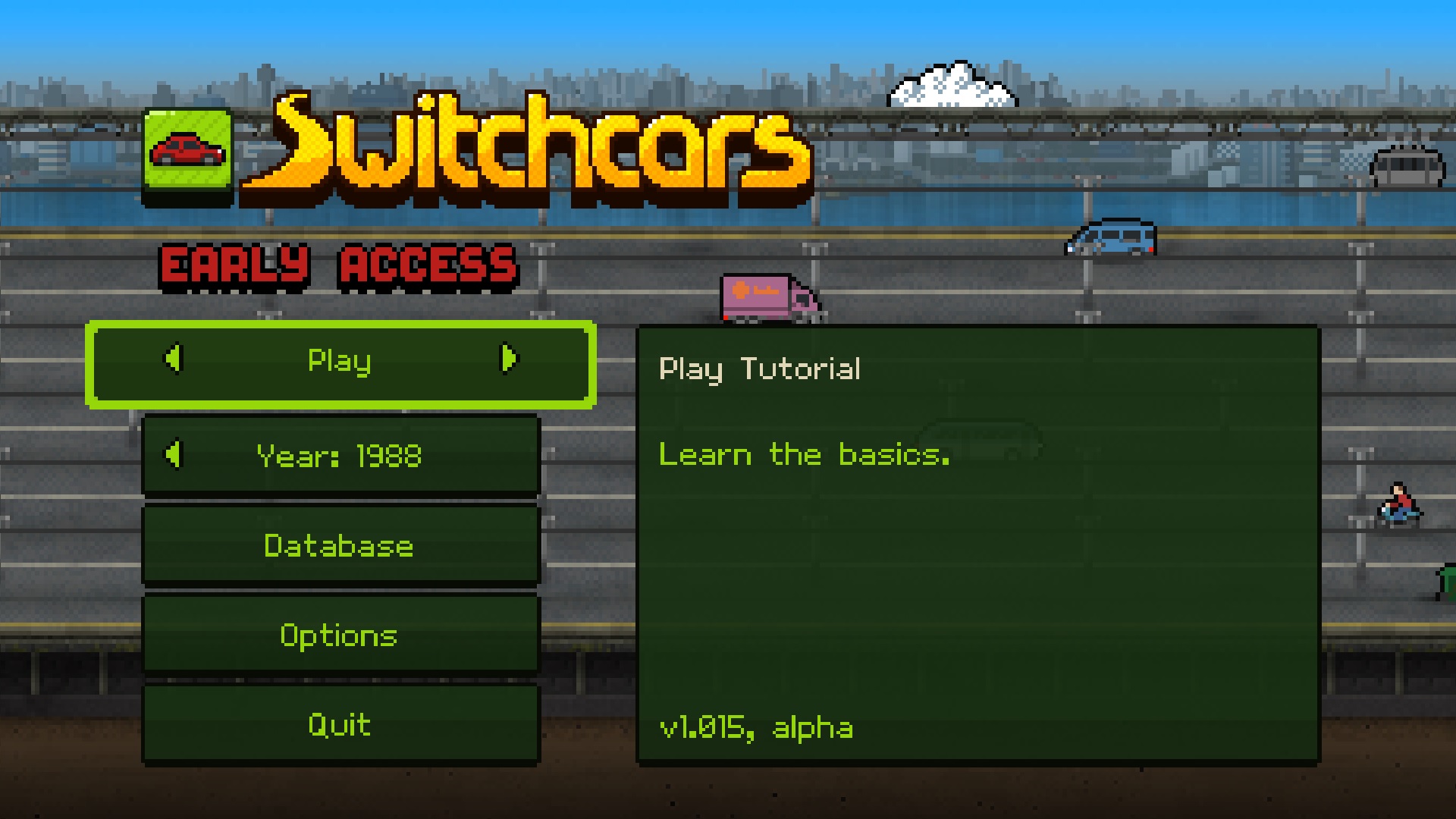
Switchcars is a weird little game. The core premise is that you can hijack any vehicle and switch into it on the fly. The environment changes around you frequently thanks to spacetime anomalies, so sometimes you might find yourself on a highway, sometimes on a river, sometimes on a snow-covered mountain, etc. You find and hijack cars and non-cars alike (bicycles, trains, airplanes, tractors, just about everything is fair game) and speed to the next safezone as quickly as possible.

If you don't get to the next safezone quickly enough, aliens start to chase you thru the spacetime anomalies, and now you have to avoid enemies AND all the cars and assorted vehicles speeding at you at 100 miles per hour. Also, as you speed along various roads etc., you slowly travel forward in time, so your game might start in the 1980s and finish in 2016.
That took a long time to explain all the details. Two solid paragraphs. In practice, this is fun as hell. It's a sidescrolling racing game at breakneck speed, with a lot of toys for you to play with (there's dozens if not hundreds of different vehicles), and a ticking clock that brings it all together into a solid little challenge. It is stressful. But a good type of stressful.
5) Battlesloths

The benefit of reviewing these Humble bundles years after they first came out is that now I get to compare Humble Originals' first release to how they're presented today. Battlesloths is a cute little PVP multiplayer arena game in its original release, but somebody at Rooster Teeth Games clearly saw this and decided that it could be even better with a little extra money thrown at it.
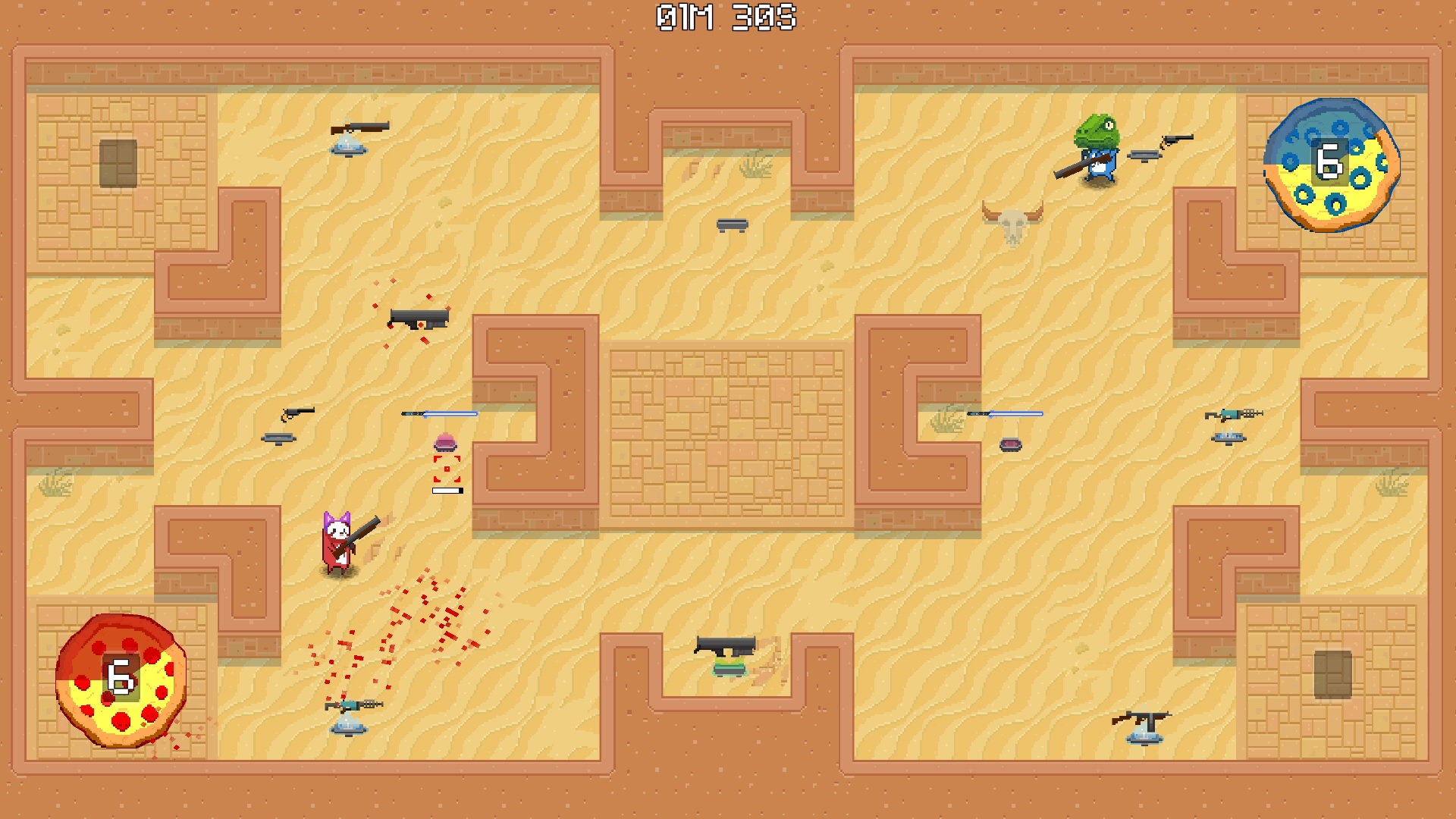
Here's the original pitch: you are a sloth, and you are in a room with one or more other sloths, and there are a lot of weapons lying around. If you die, you drop a slice of pizza. Whoever gets the most slices of pizza back to their base wins.
That's already totally solid as a hook, and the gameplay is good enough to back it up. Moving around feels good; I don't know why they went with a sloth as your player character, given that the game doesn't feel particularly slow to control. The weapons control well, and the arenas are well-designed so that it's tense to roam around and try to take other players out. It gets even more chaotic when there's four of you.
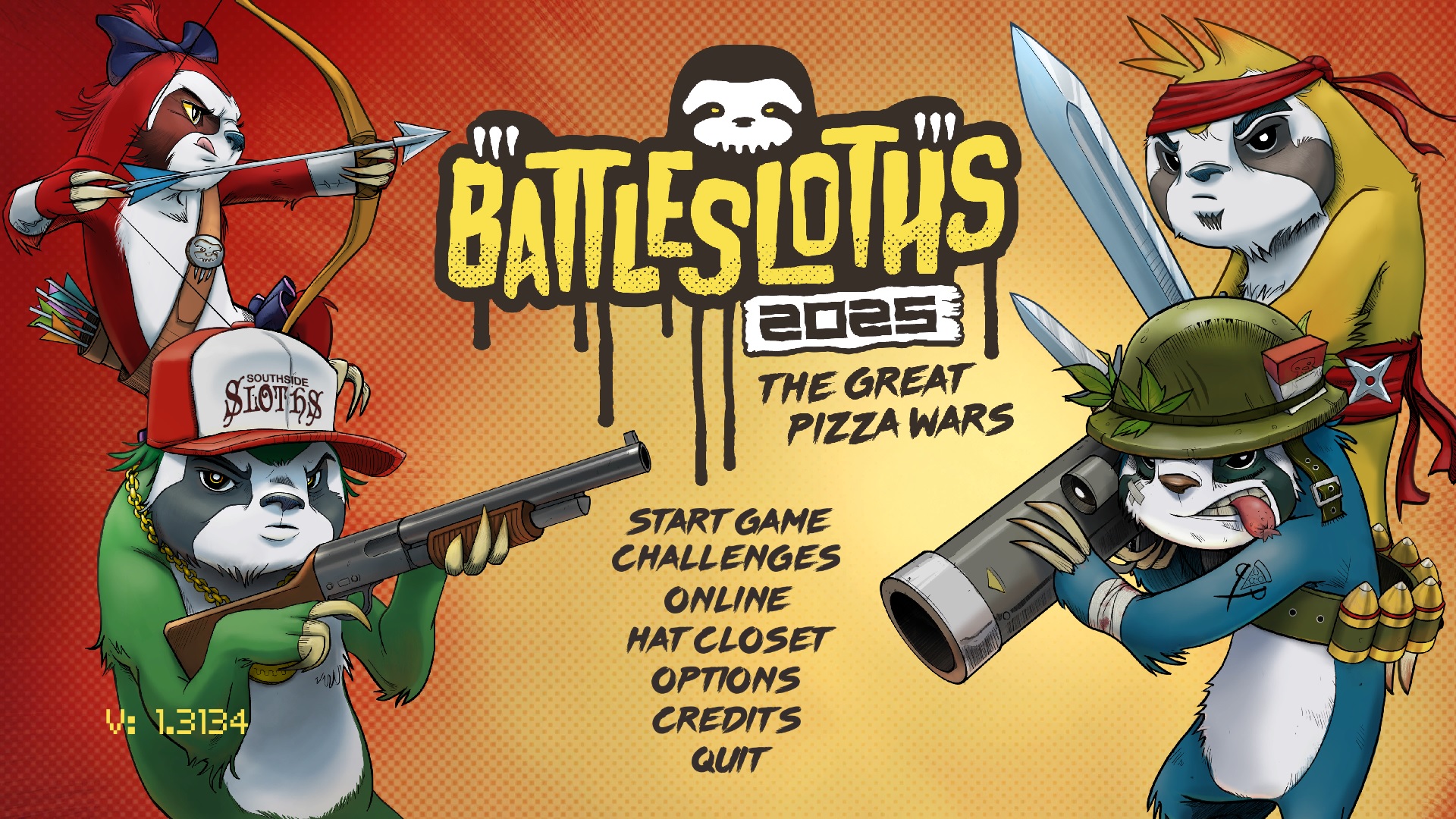
And then there's the Rooster Teeth release on Steam, which is called "Battlesloths 2025: The Great Pizza Wars." I guess it's part of the gimmick that it's very over the top.
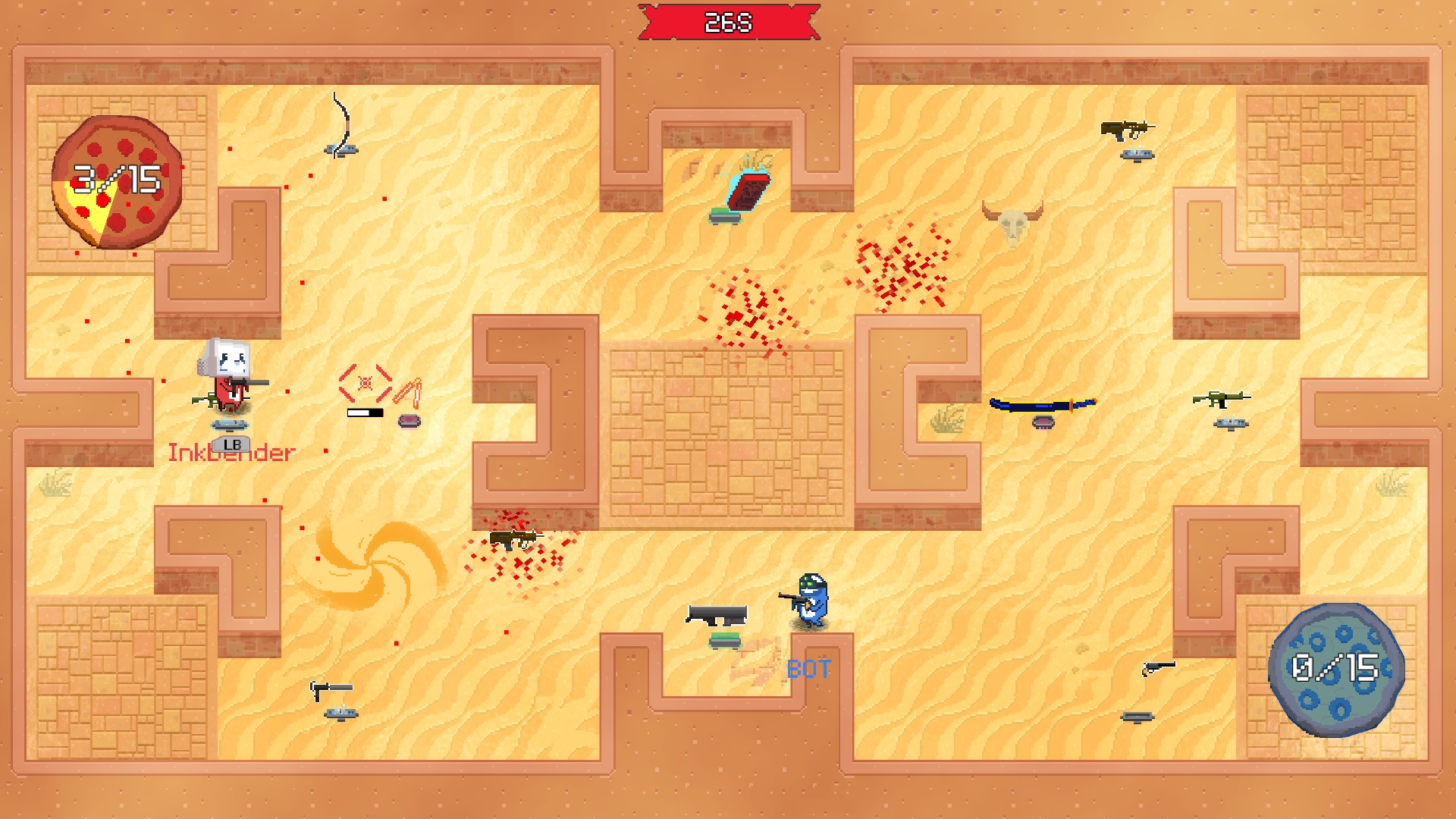
Battlesloths 2025 has a new animated cutscene intro to set up the post-apocalyptic world this game apparently exists in. It has slicker menus, a few new gameplay features, and crucially a set of unlockable hats, so that you're encouraged to play the game as much as possible so you can unlock new hats. That's not a bad method of extending the gameplay length, but honestly I didn't love the game SO much that I need to play hours and hours in order to unlock all the hats. I liked my kitty ears just fine.
6) ARK: Survival Evolved

Fuck Minecraft for codifying a lack of tutorial in the survival game genre. As I mentioned earlier, if you're gonna make a game (especially one in a genre I'm not familiar with), you gotta teach me how to play your game. You've gotta make me want to play more of it.
Well, the entire survival game genre has decided, not so much, including Ark: Survival Evolved. After 100 GB of installation (REALLY???), I'm plonked down into the game that has been pitched to me as "a survival game, but with dinosaurs into it." I look to my left, and huh, what do you know. That's a dinosaur over there.
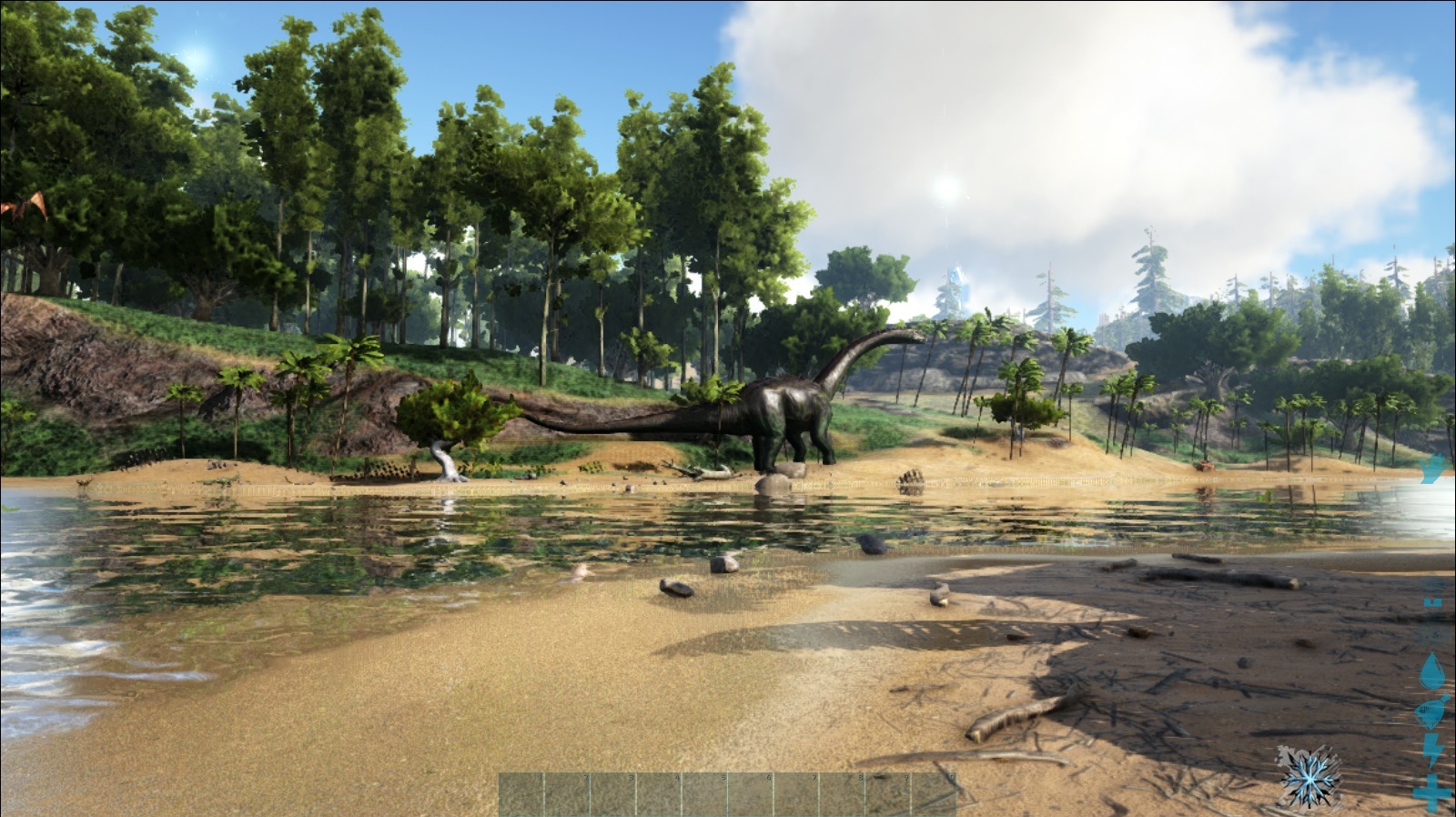
Now, Ark did not give me much in the way of direction. There's a survival guide in the main menu, and it is a slideshow, and I did not turn on a videogame so I could read a slideshow.
What Ark did give me was a very pretty world to wander around in, with lots of dinosaurs to take pictures of. So that's what I did.
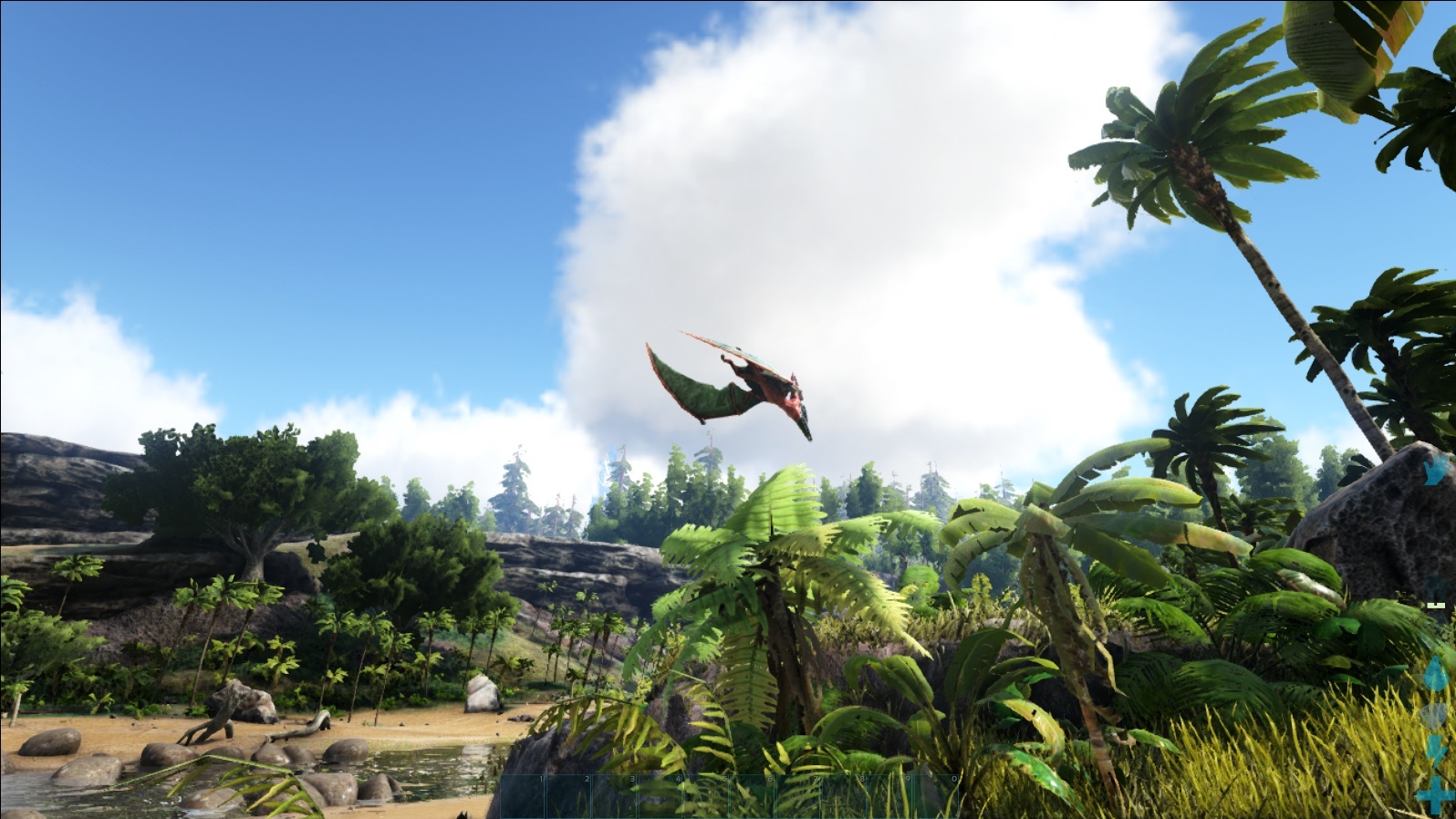
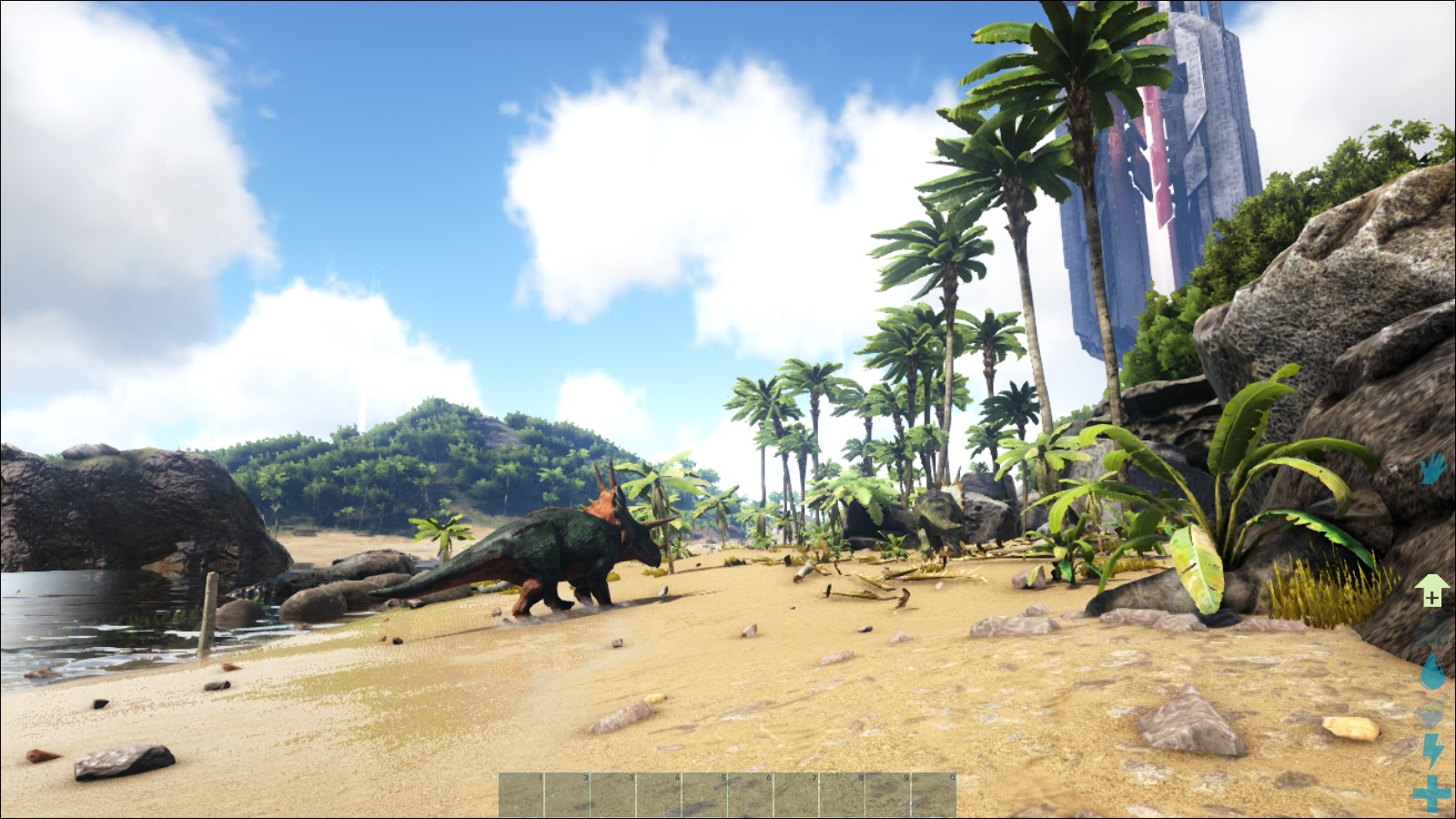
This is probably the closest I'll ever get to wandering around the actual Jurassic Park. And I gotta say: I had a decent time with this. I didn't figure out any of the survival mechanics that the designers have surely worked very hard on, but I did like looking at all the pretty dinosaurs.
7) Grav

This game was originally released in 2015, and it is STILL labeled as being in Early Access. Did the developers just decide to stop making the game?
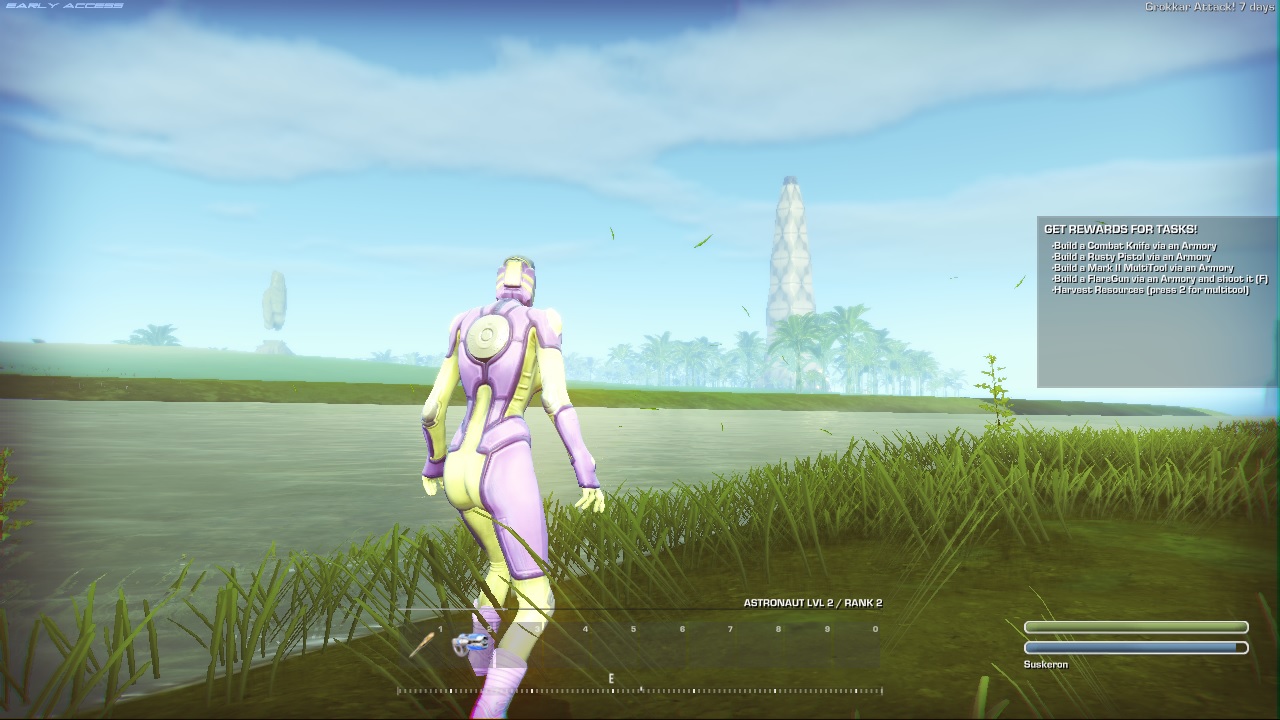
It definitely feels like it, cause holy shit is this game broken. I had to turn the resolution way down to get the framerate somewhere that's even remotely near functional. Not that it affected the visuals much; no matter what I did, the game looks like a bad ripoff of Halo for the original Xbox.

Grav is broken and it is stupid. It's another survival game, this one themed around various foreign planets, but it starts you off with an inventory full of all the supplies you need to build things like a campfire or AN ARMORY. It allows you to teleport offworld at any point to a space station full of NPCs and shops. That's like if you went camping, but you were driving distance from a McDonald's the whole time, so you ate McDonald's at every meal.
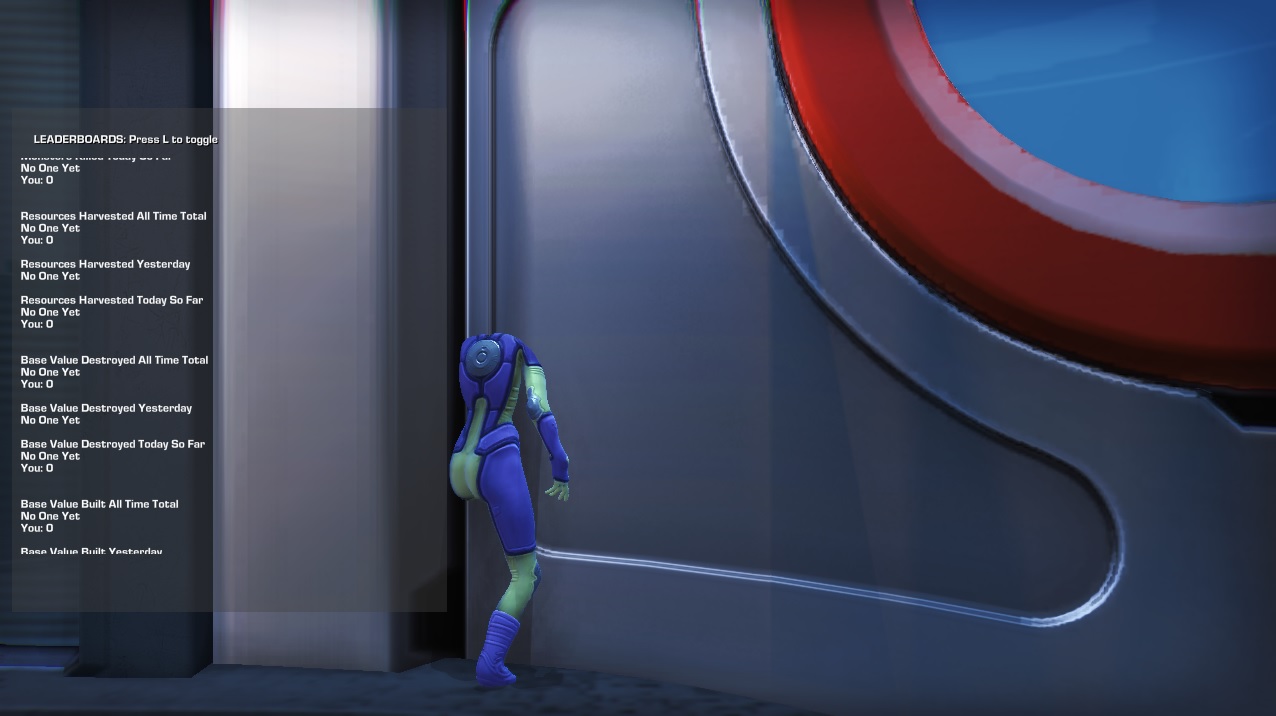
It's not fun to look at it, it's not fun to play, it's not as clever as it seems to think it is. Just a broken mess from top to bottom.
8) I Am Bread
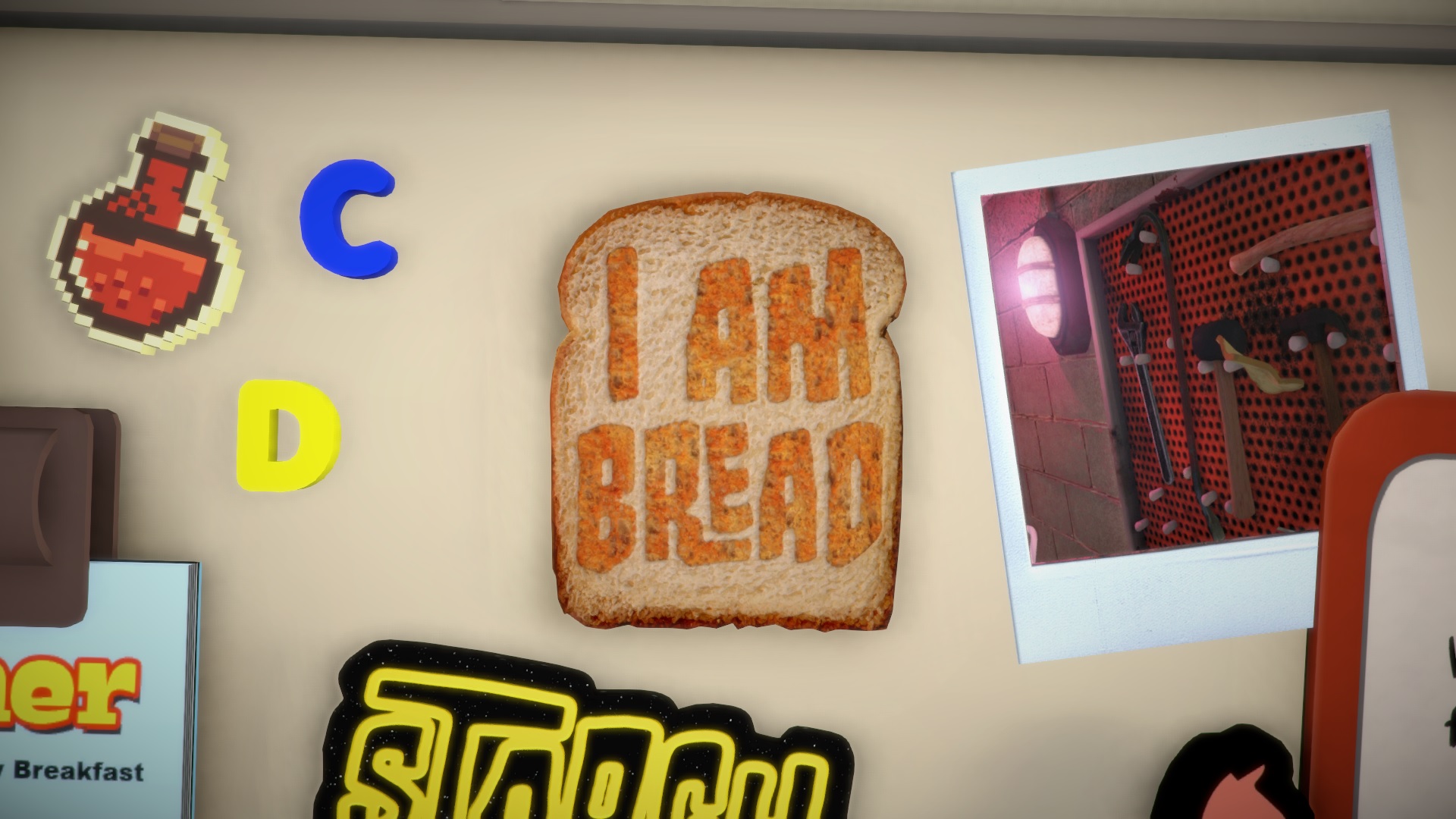
I had a big decision to make here. I Am Bread is more functional than Grav, and it does teach you its own gameplay better than Ark does. On those levels, it is more successful than both of this month's survival games. It felt like I should say, objectively, that those games are worse than this one.
But I'm not measuring objective quality on these rankings, if such a thing exists. What this ranked list is meant to display is how much I'd like to play more with each game on this list. I have at least one good reason to pick up Grav again: it's so broken and wrong-headed that it's hilarious to show to a friend.

I have no reason to ever pick up I Am Bread again. It is an awful game. I know it's been played by lots of streamers on Youtube and Twitch, and maybe that's who this was designed for. Maybe it's meant to be extremely frustrating and difficult and annoying to play because that's the type of game that it's funny to watch somebody else play. But I didn't enjoy this at all.
You play as a slice of bread. You're across the room from some cooking elements, like a toaster or a stove. It's your job to get from Point A to Point B while keeping yourself as clean as possible. The controls allow you to grip surfaces with any of the four corners of the bread, and swing yourself around. And that's pretty much the whole game.
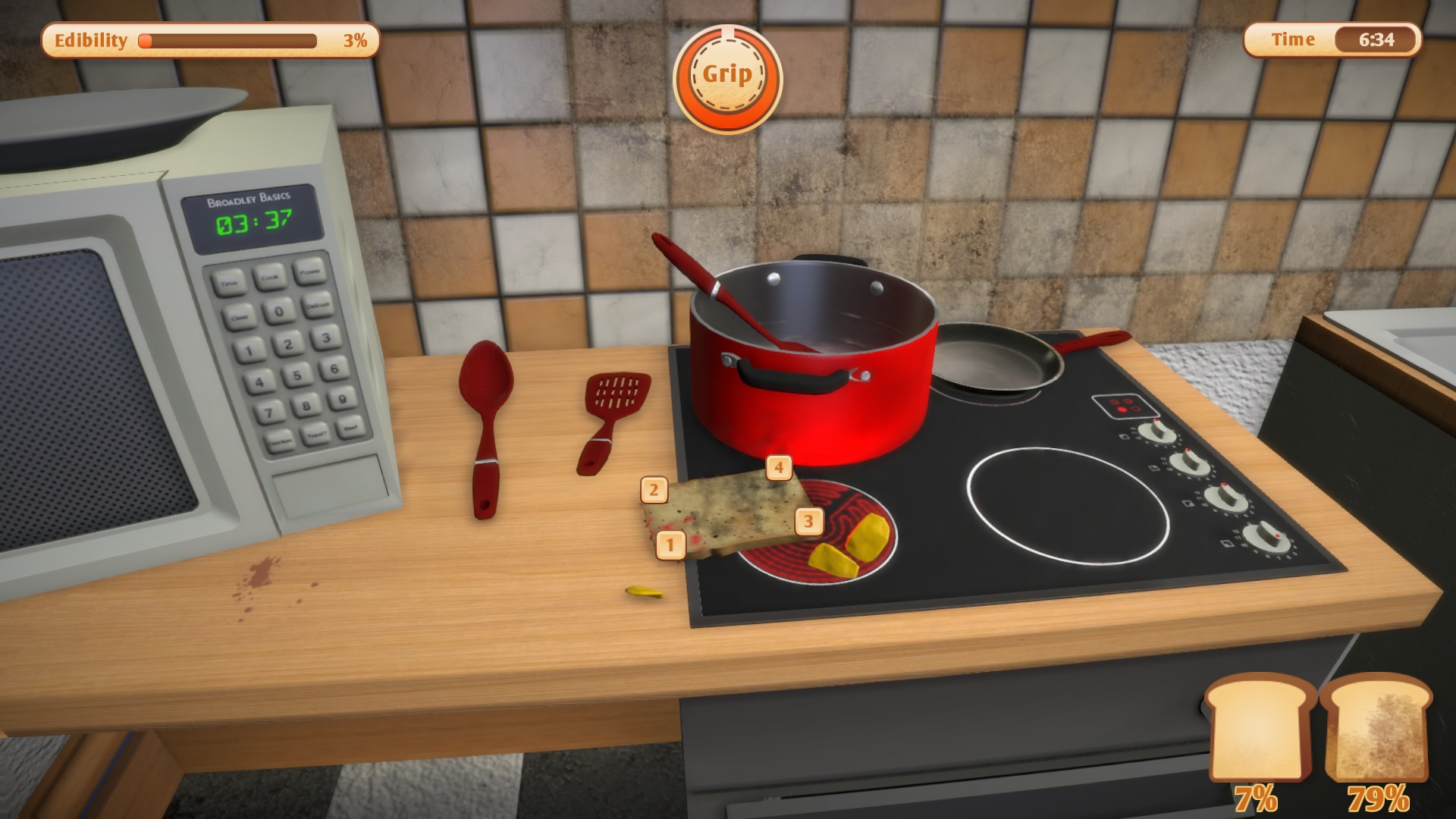
Some years ago, QWOP made waves as a game in which you controlled a man's thighs and calves with the Q, W, O, and P buttons on the keyboard, and tried to get him to walk. This feels like that game. It's more of a joke about broken game physics than a game that's actually fun to play. If that's the case, it's very successful at what it does. But I Am Bread, you made your point, and I don't need to play with you anymore.